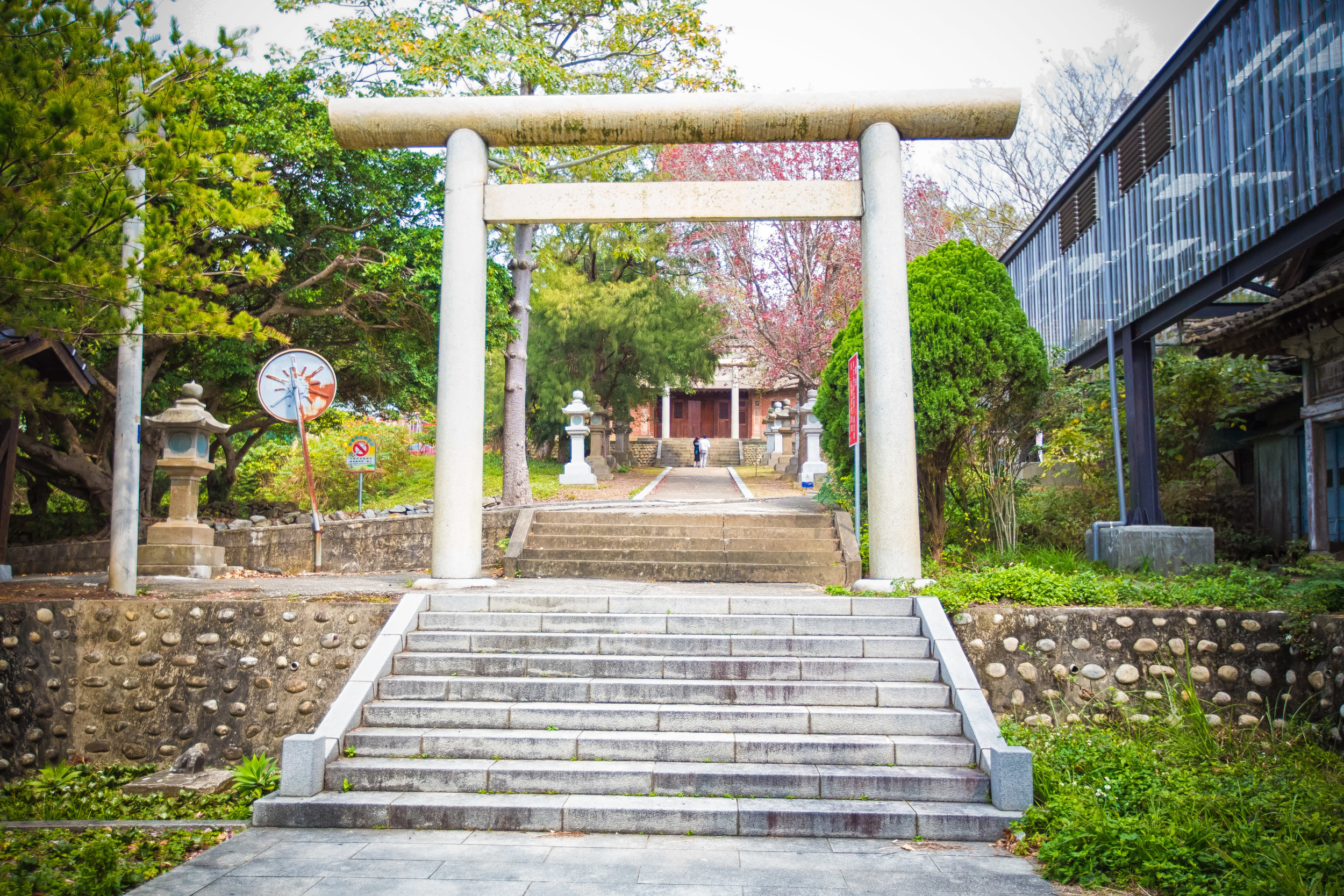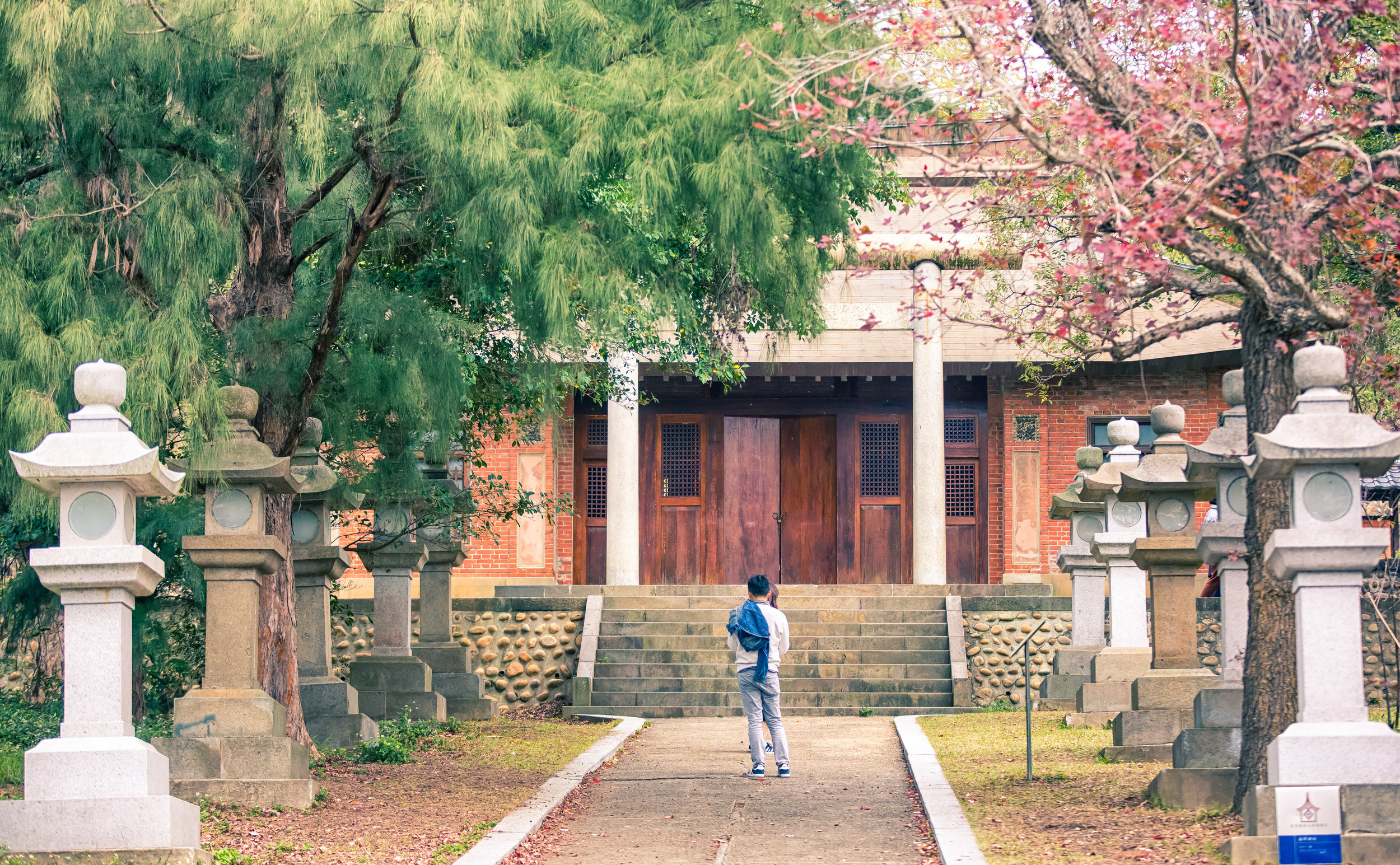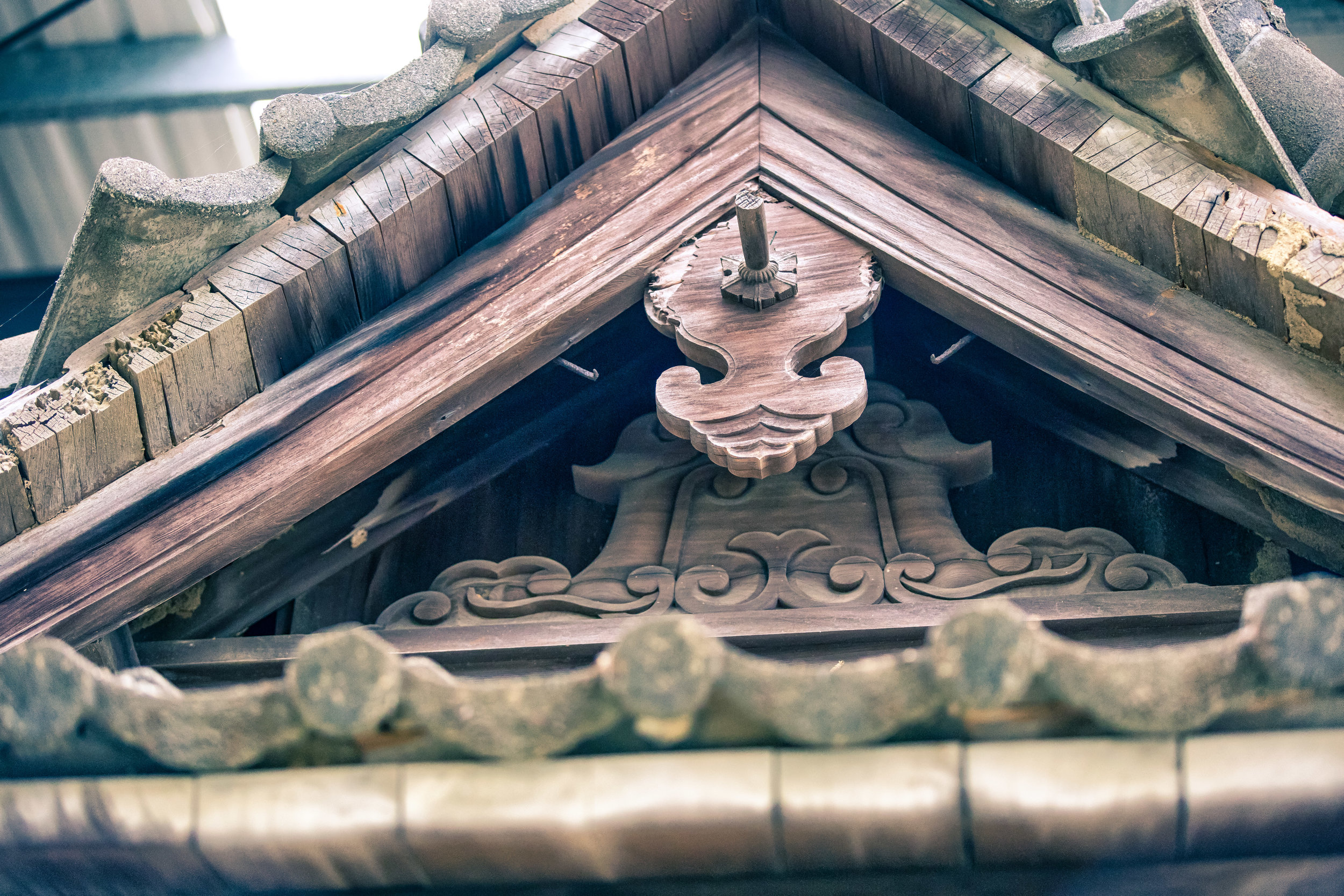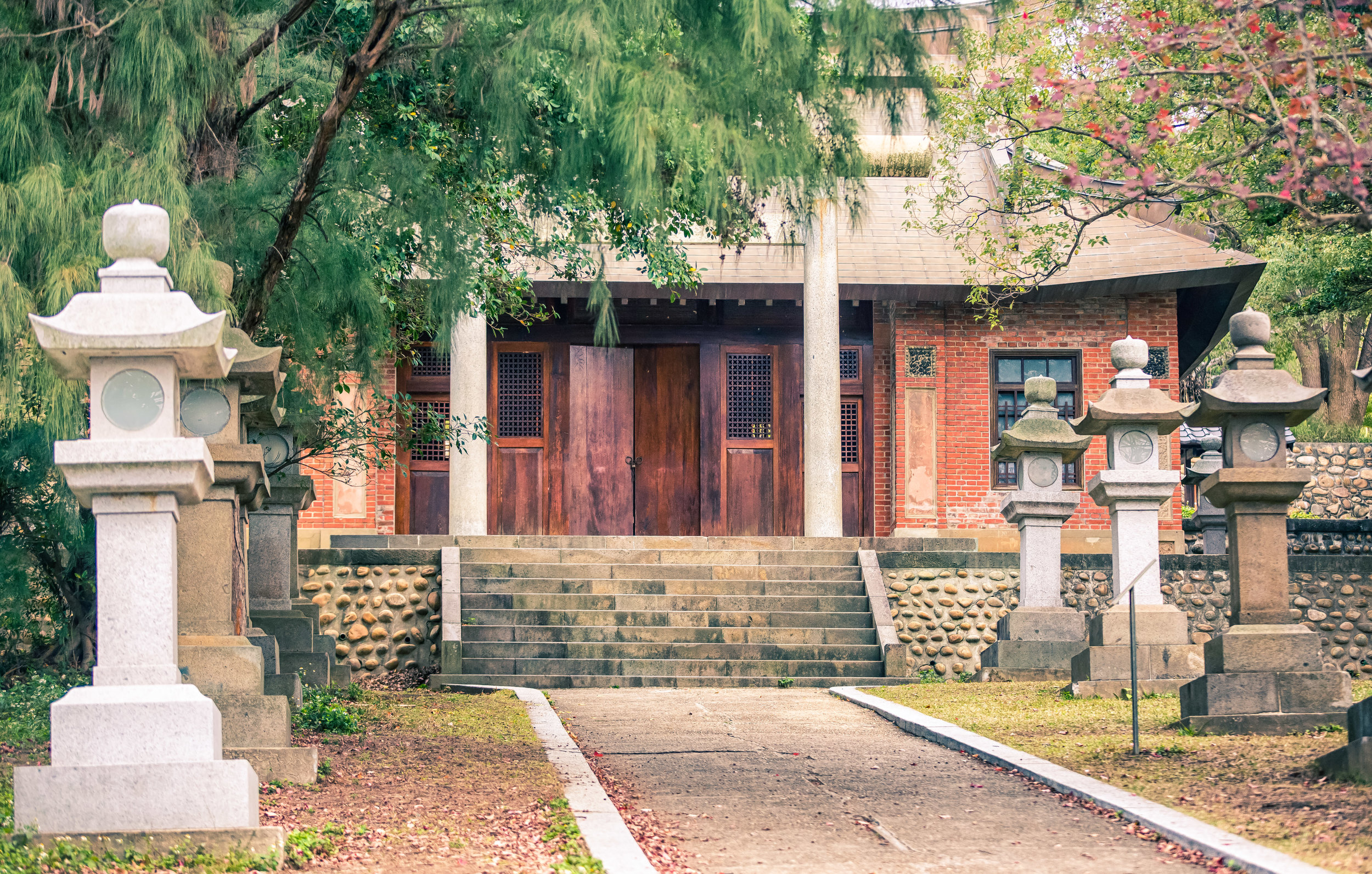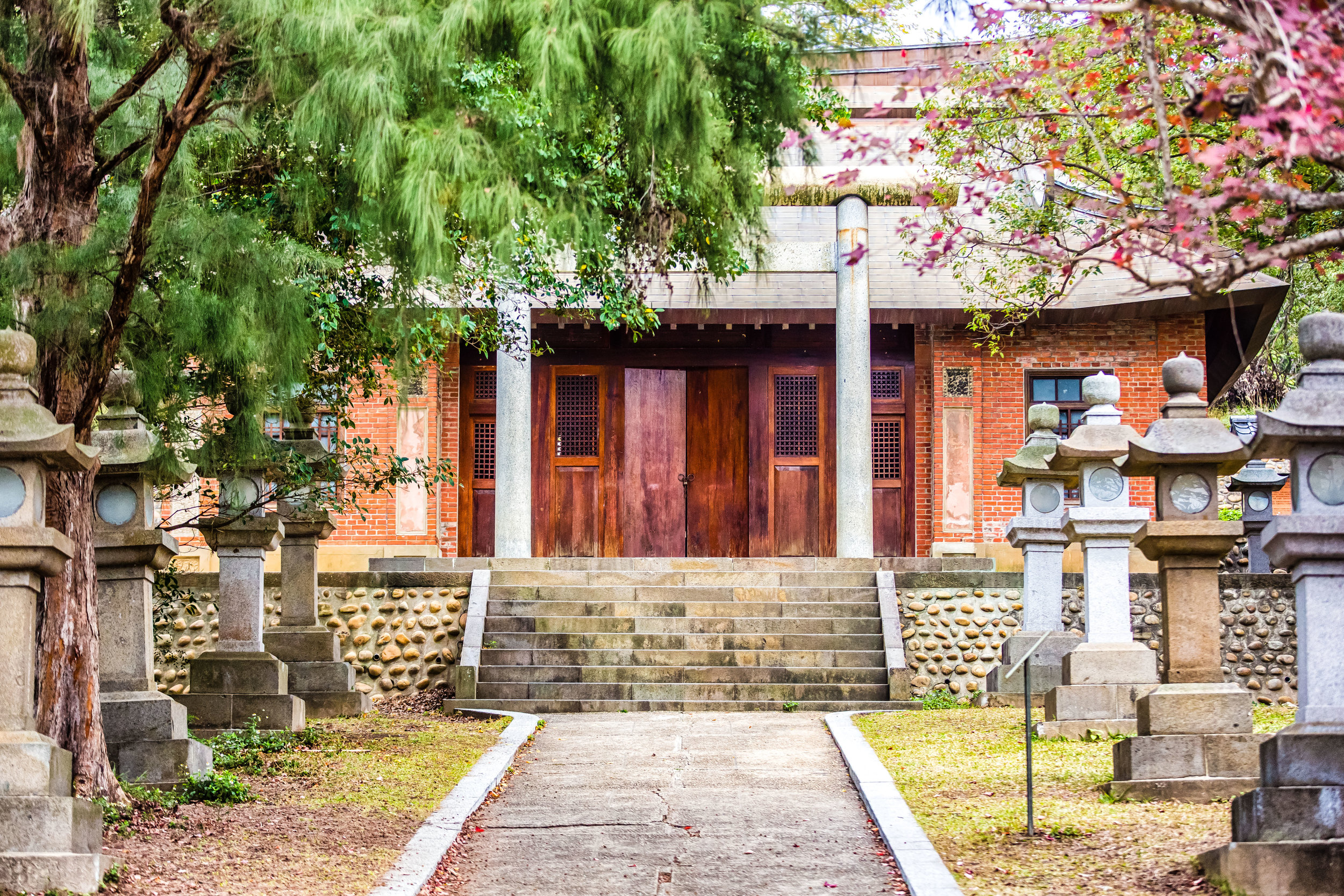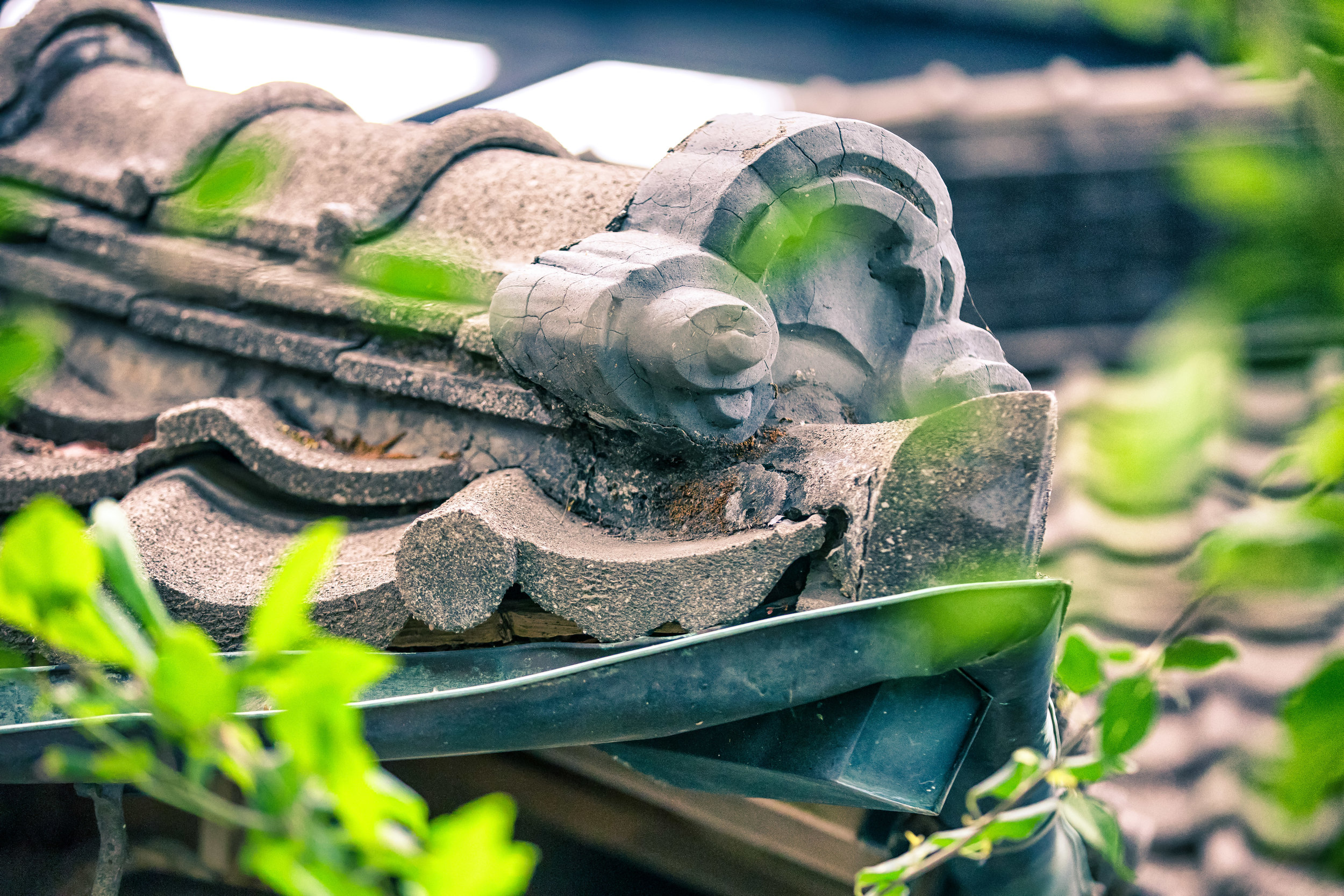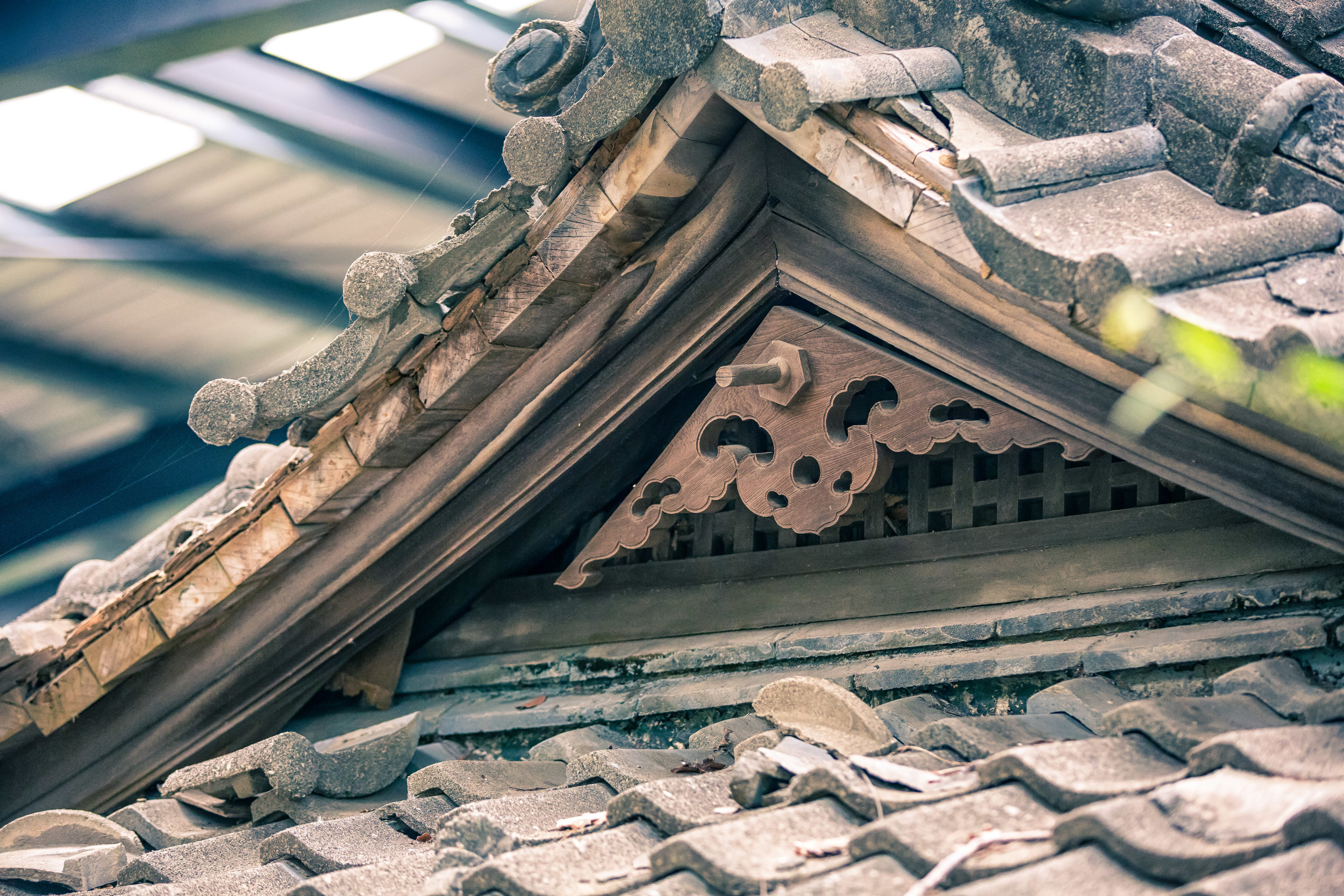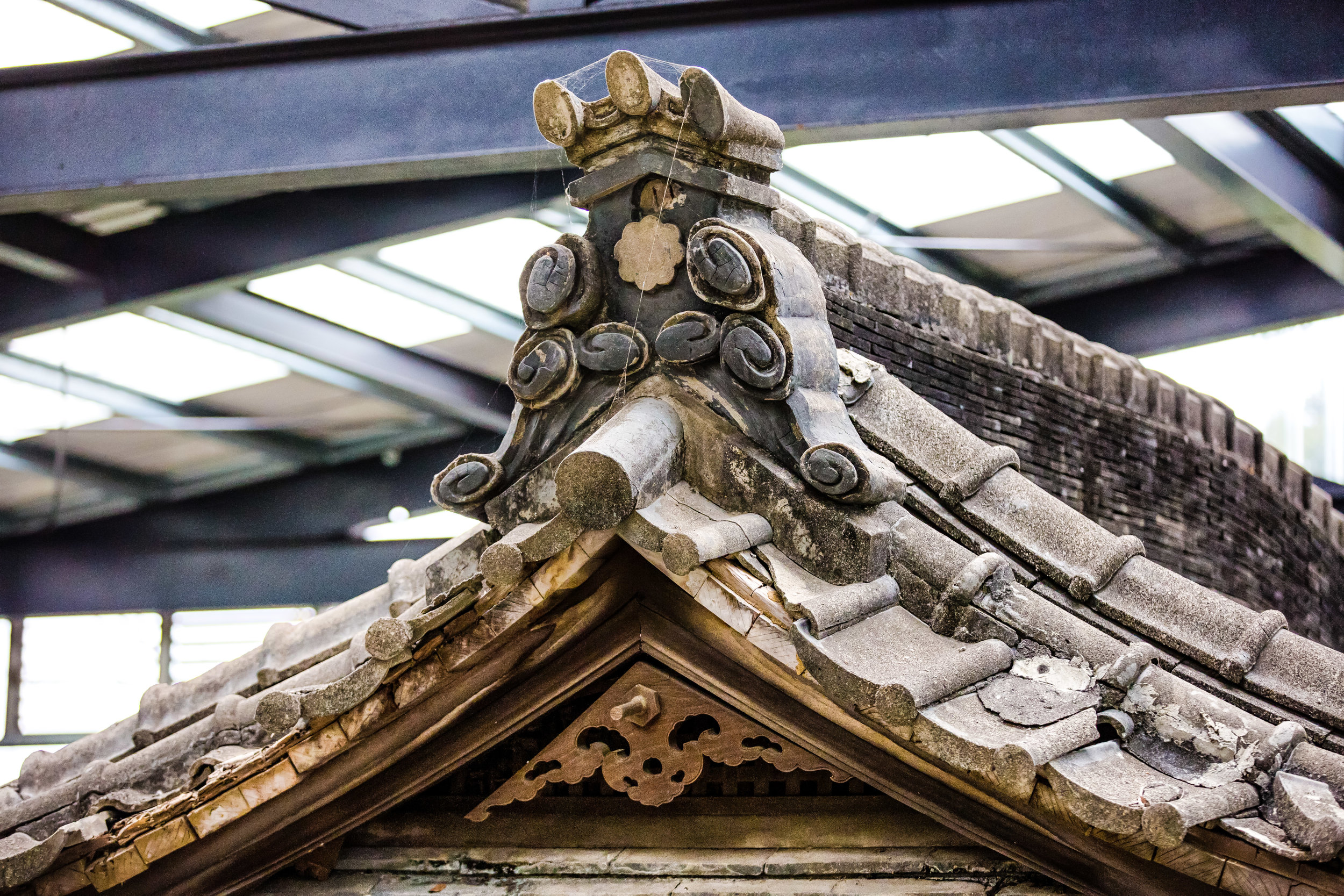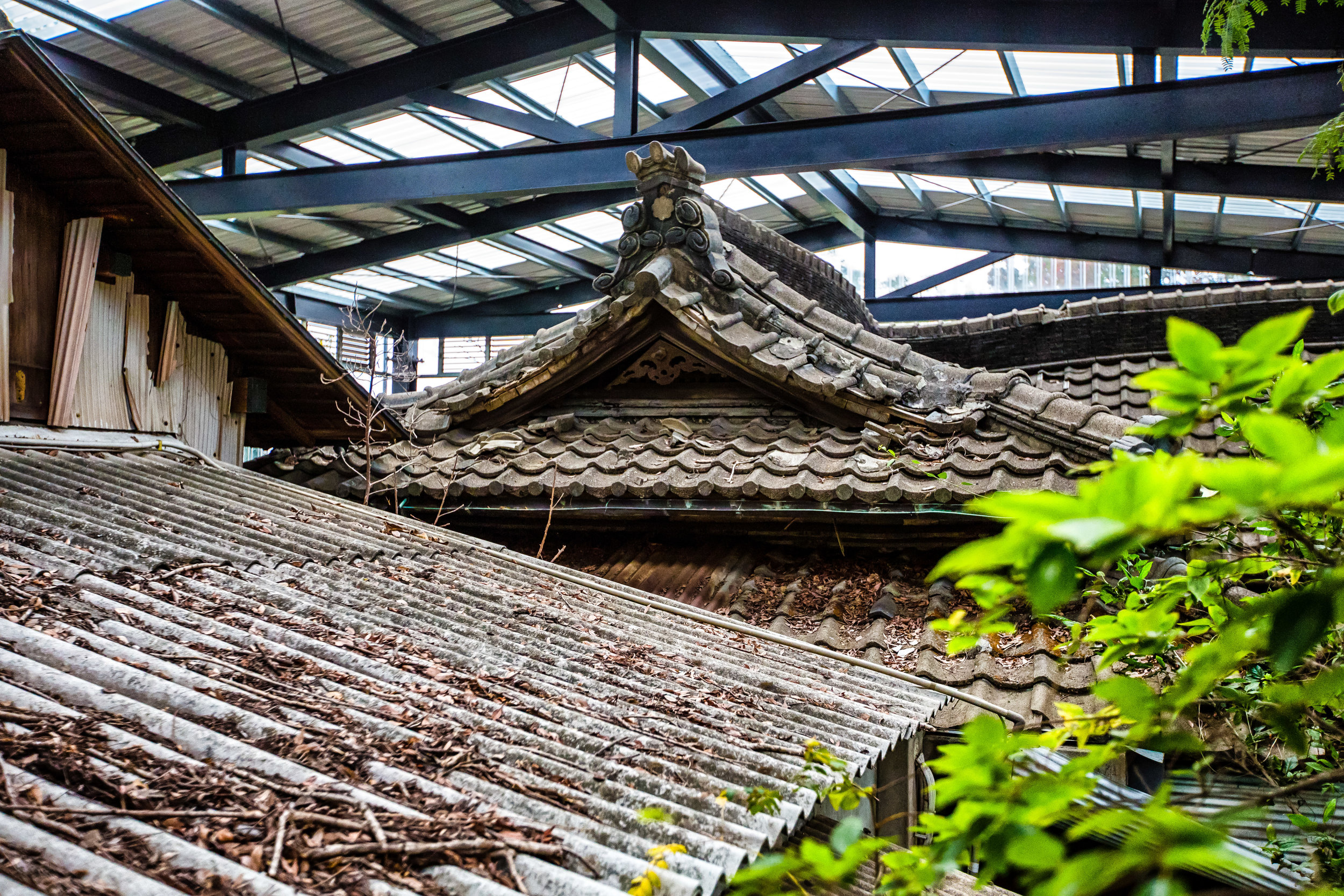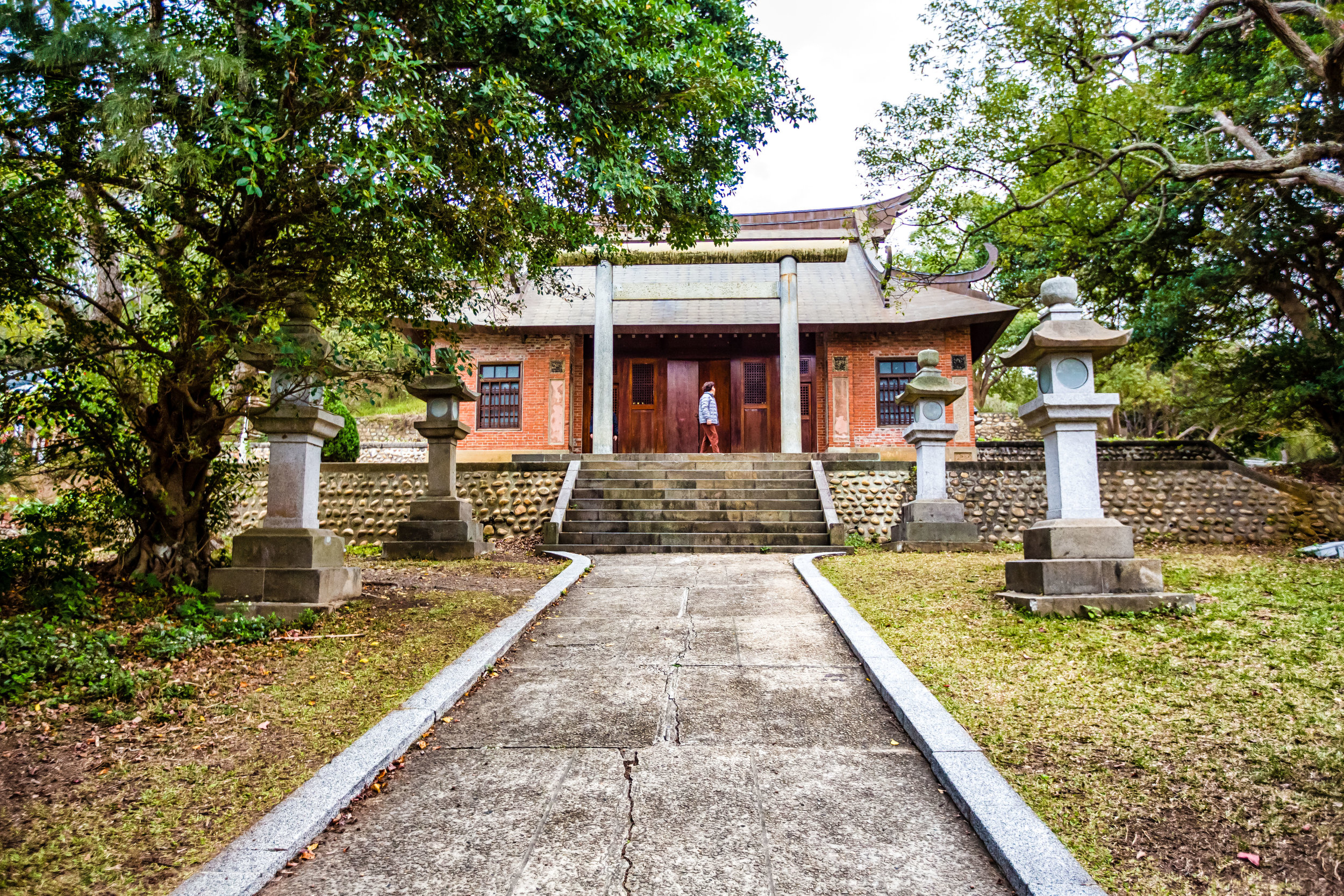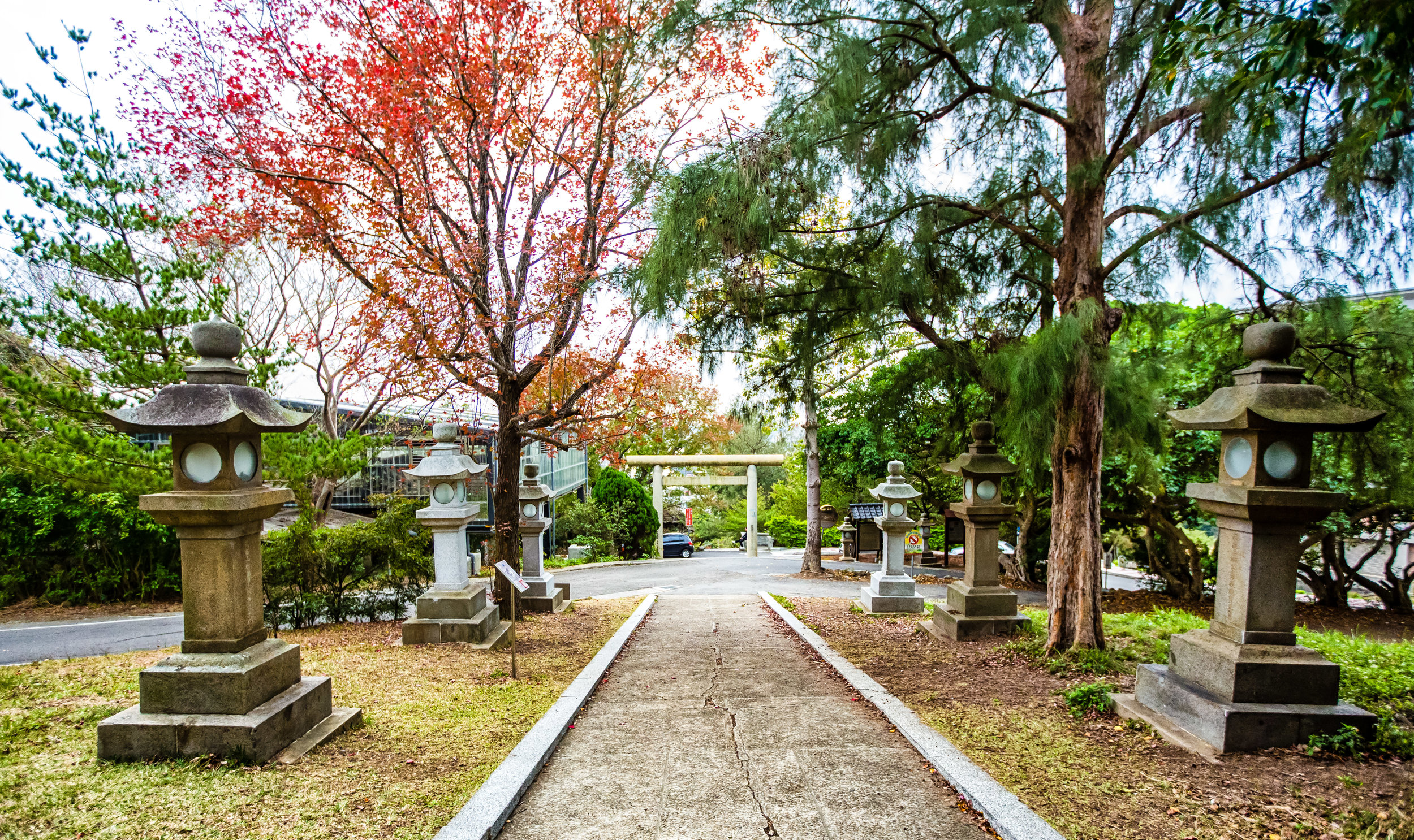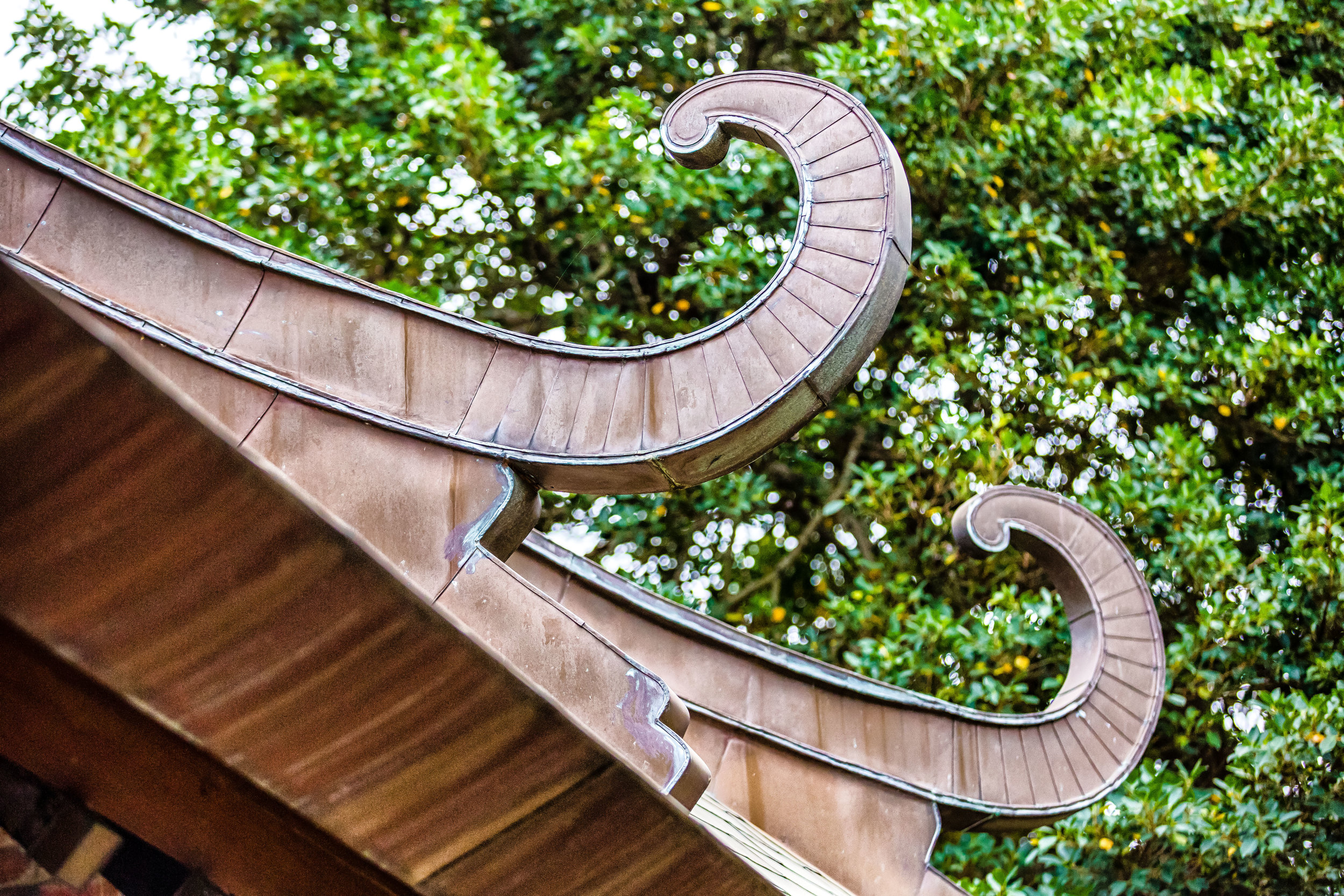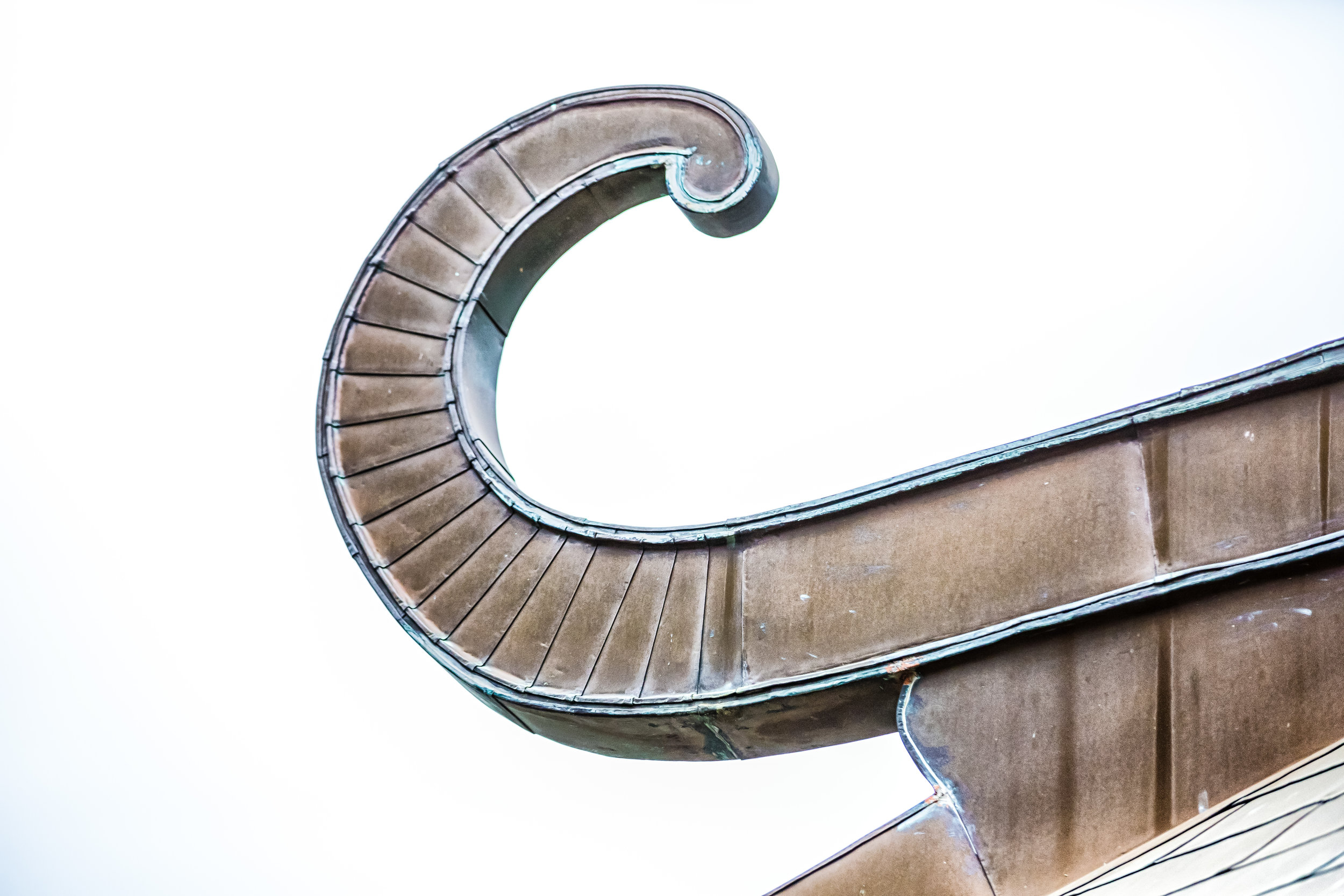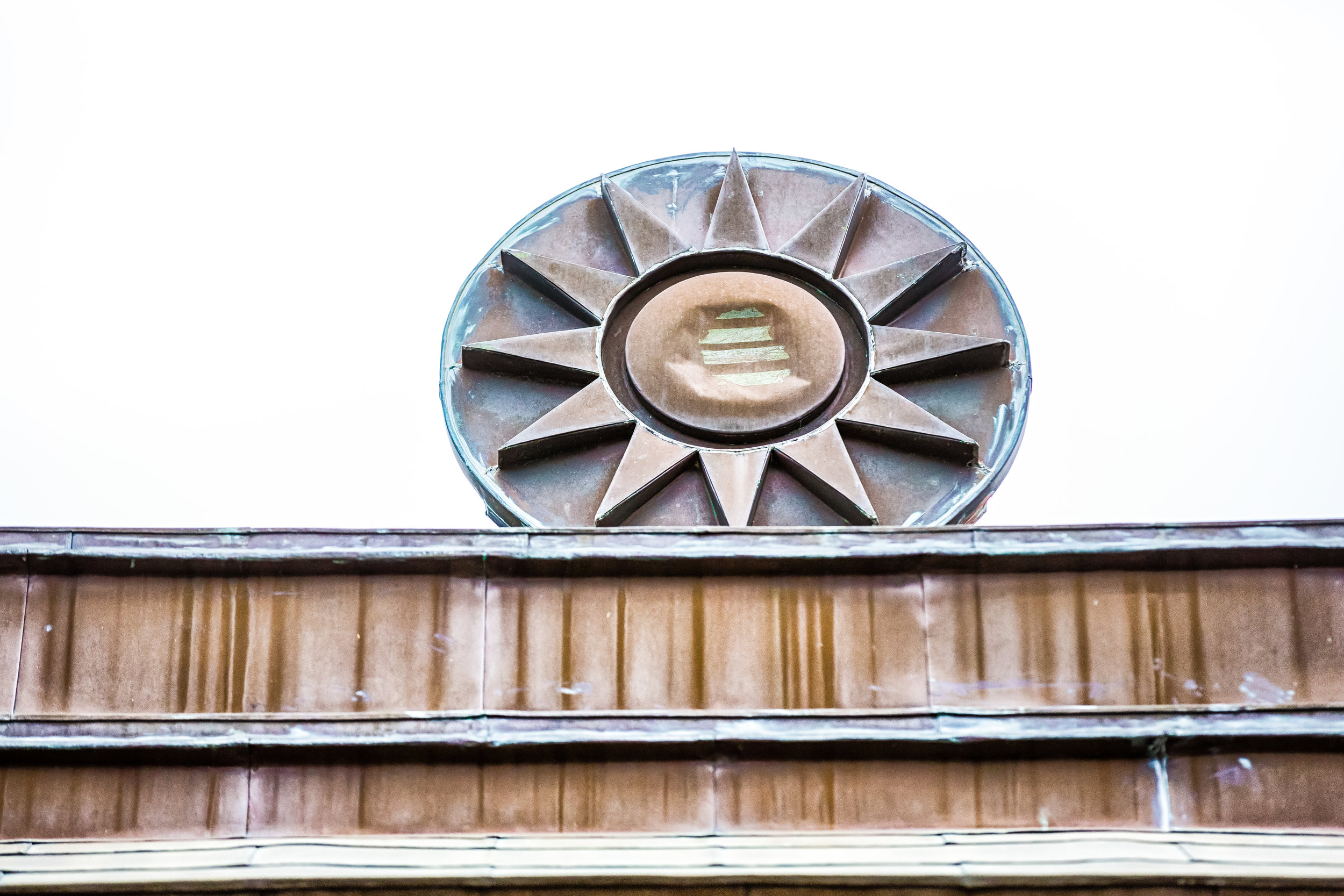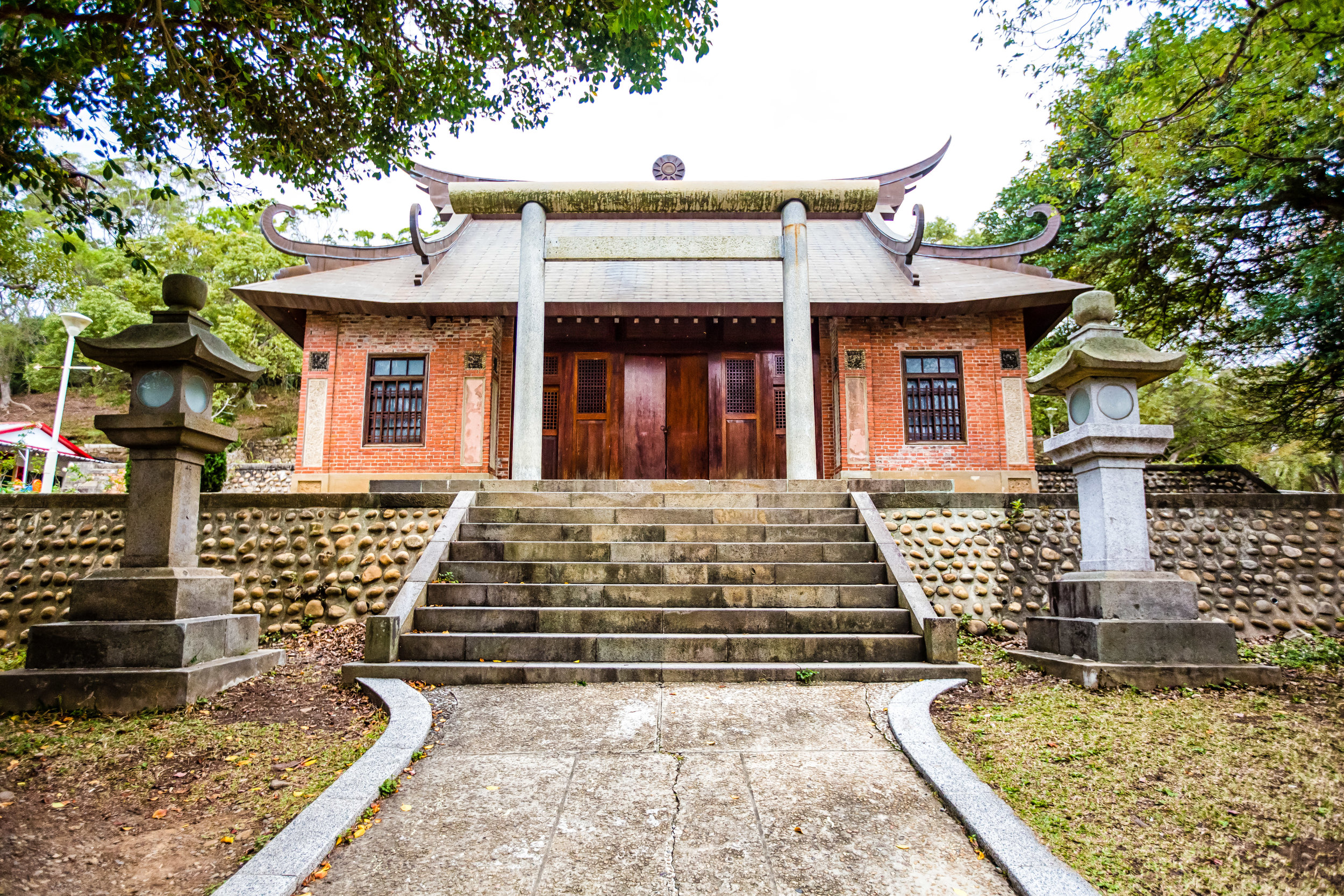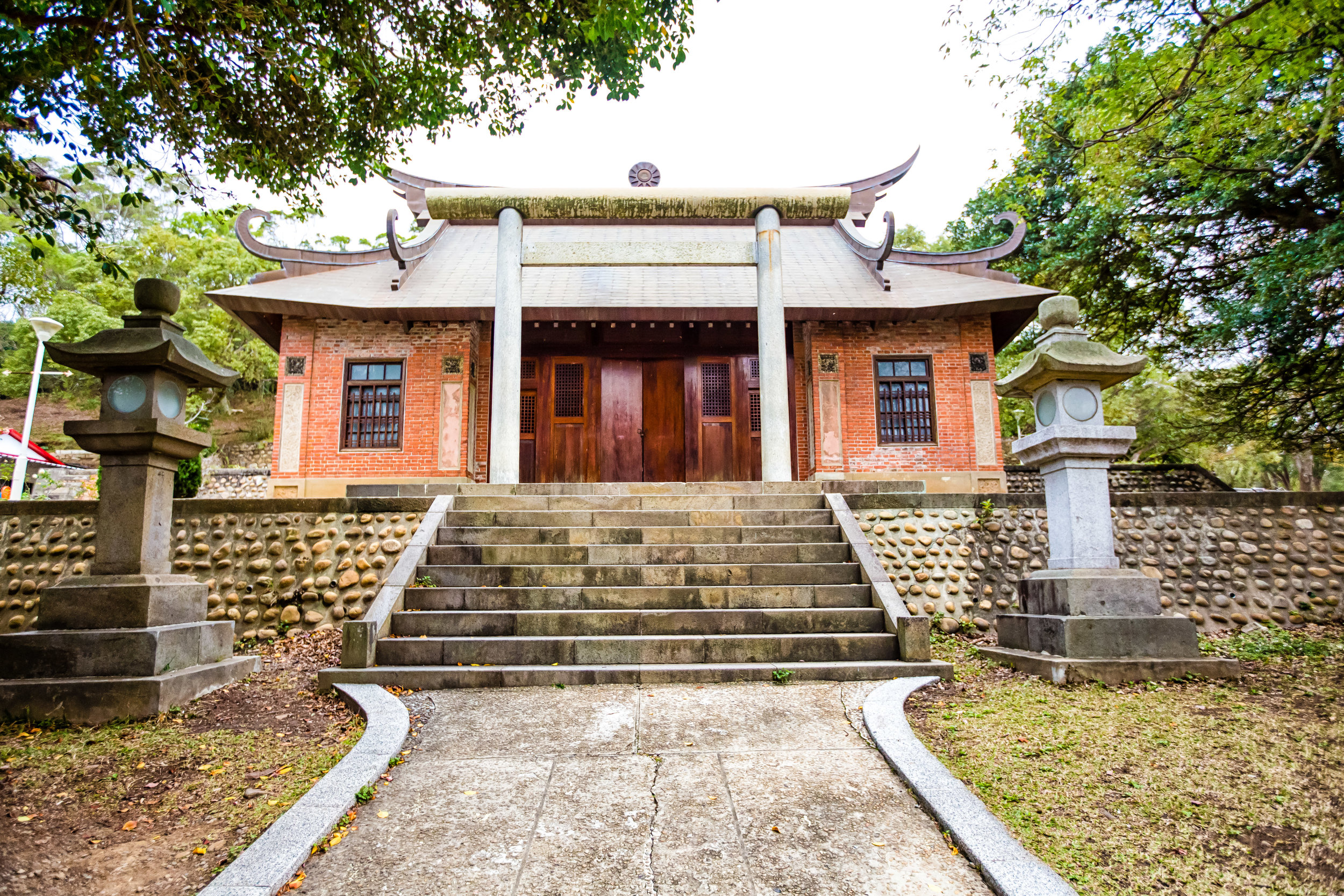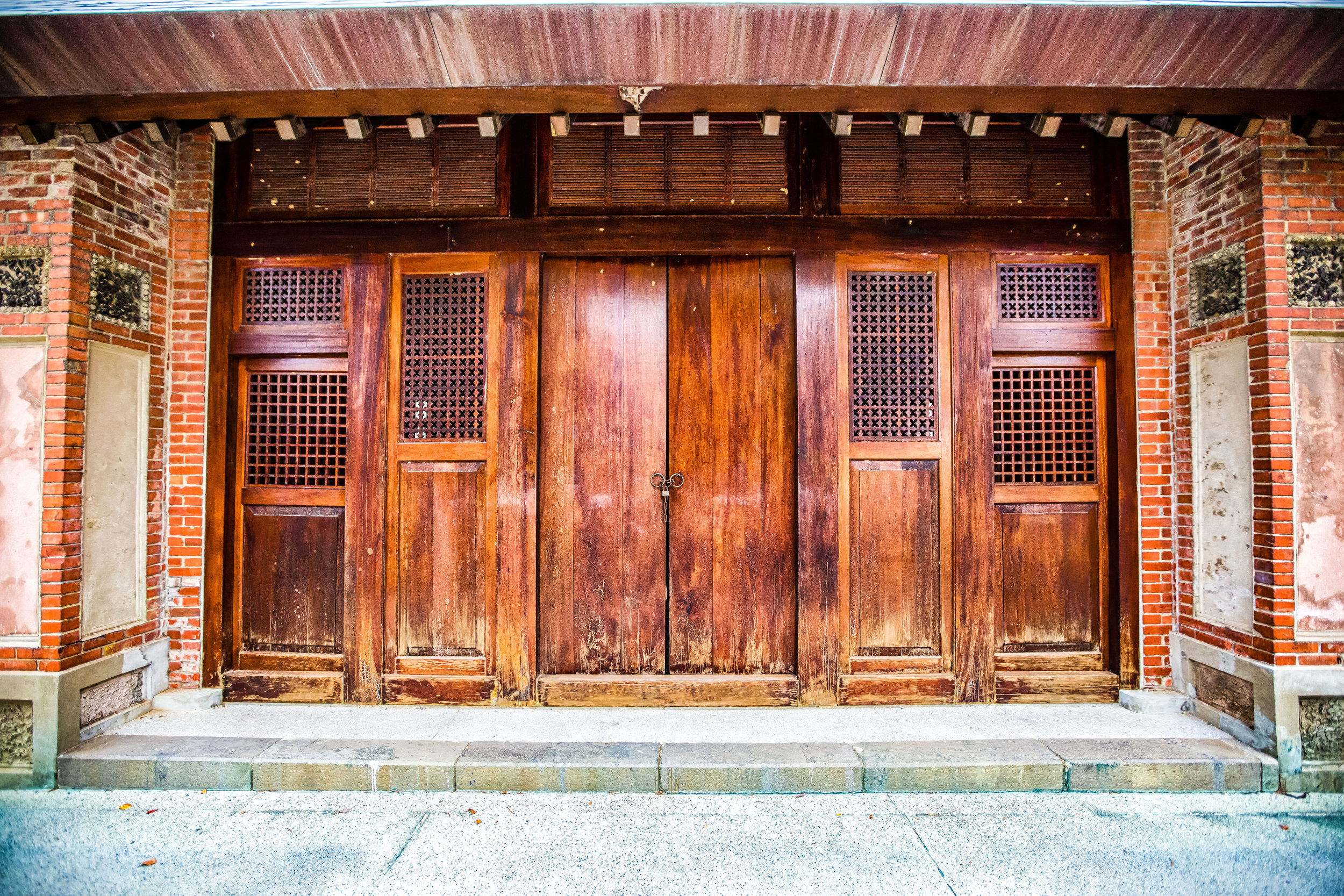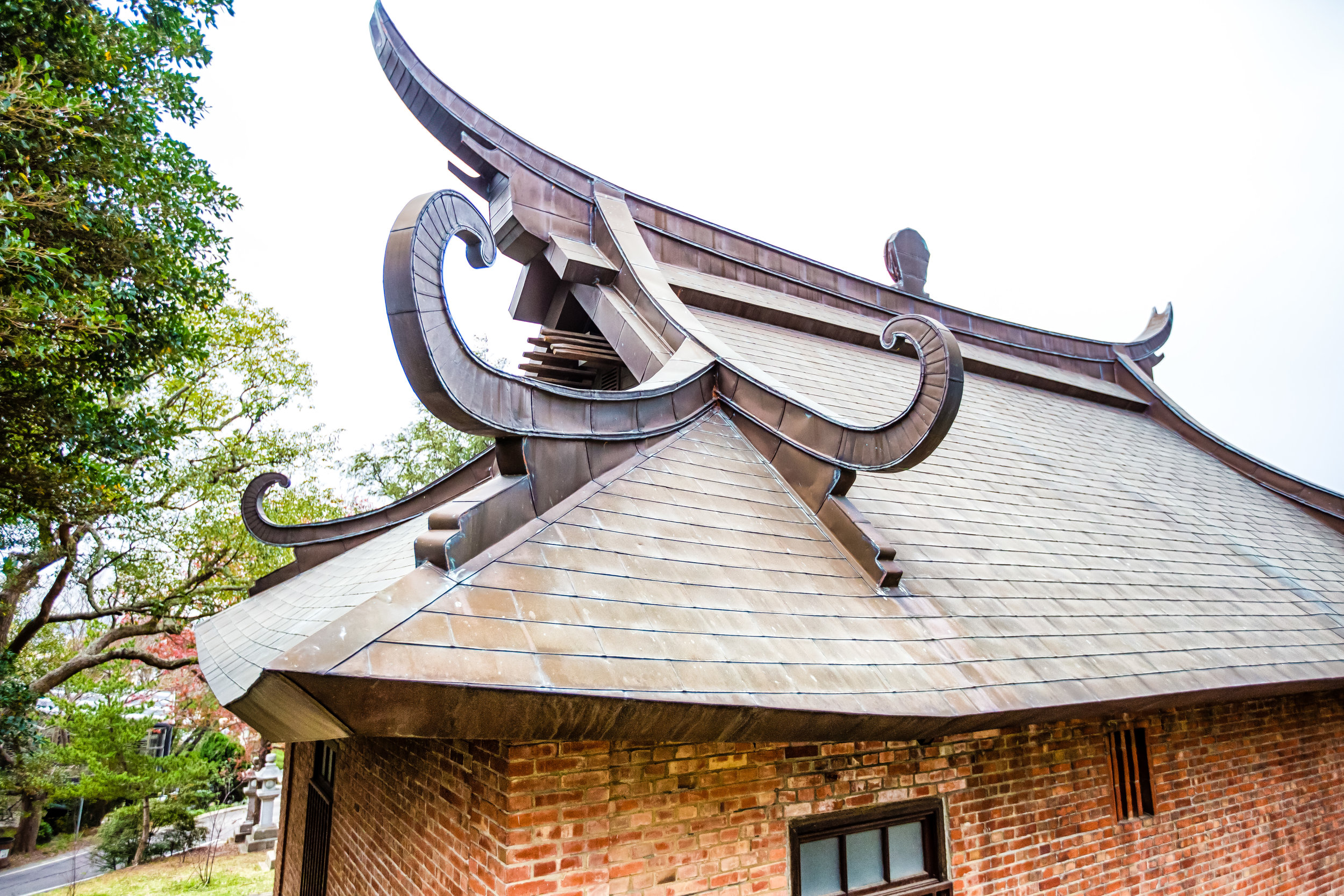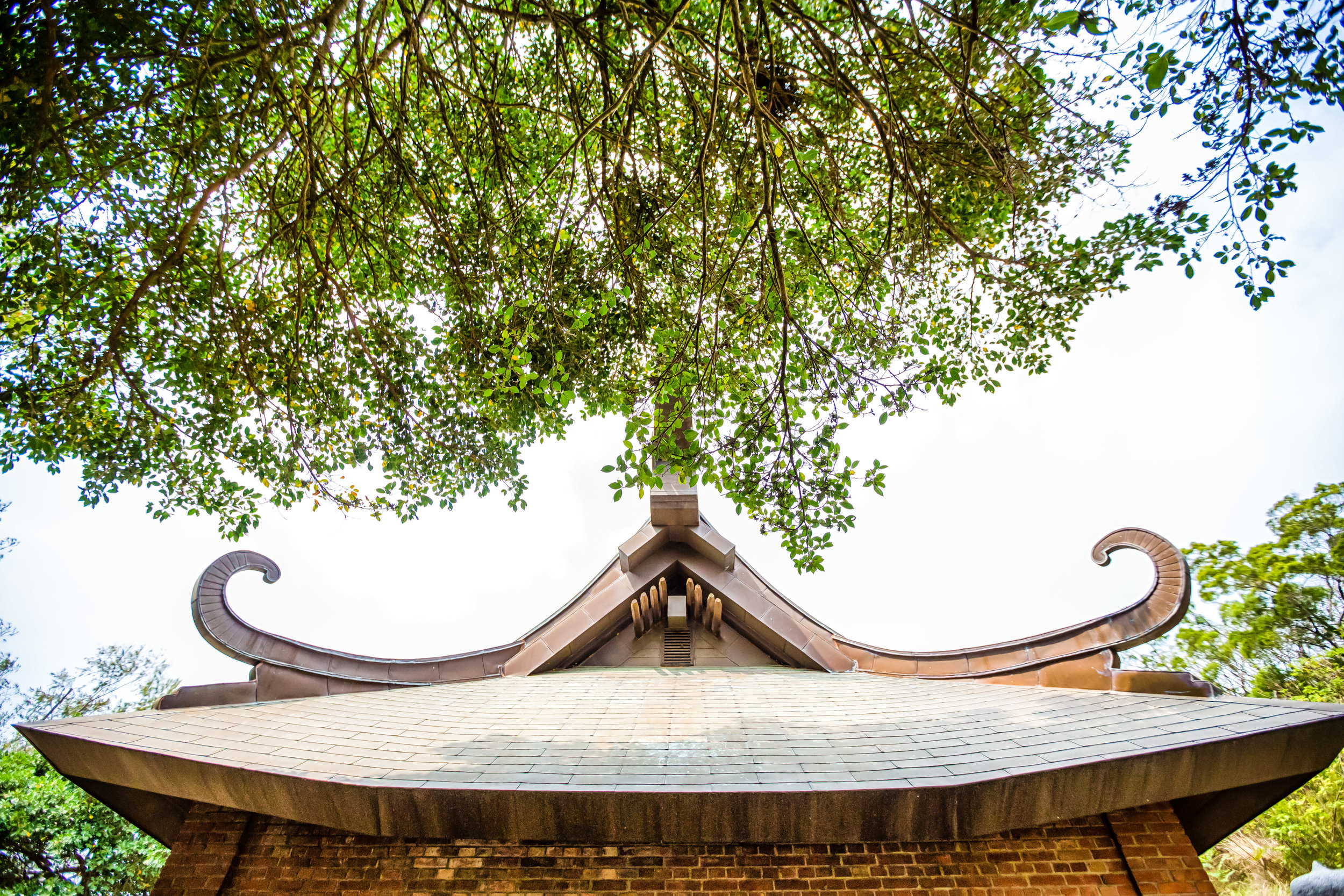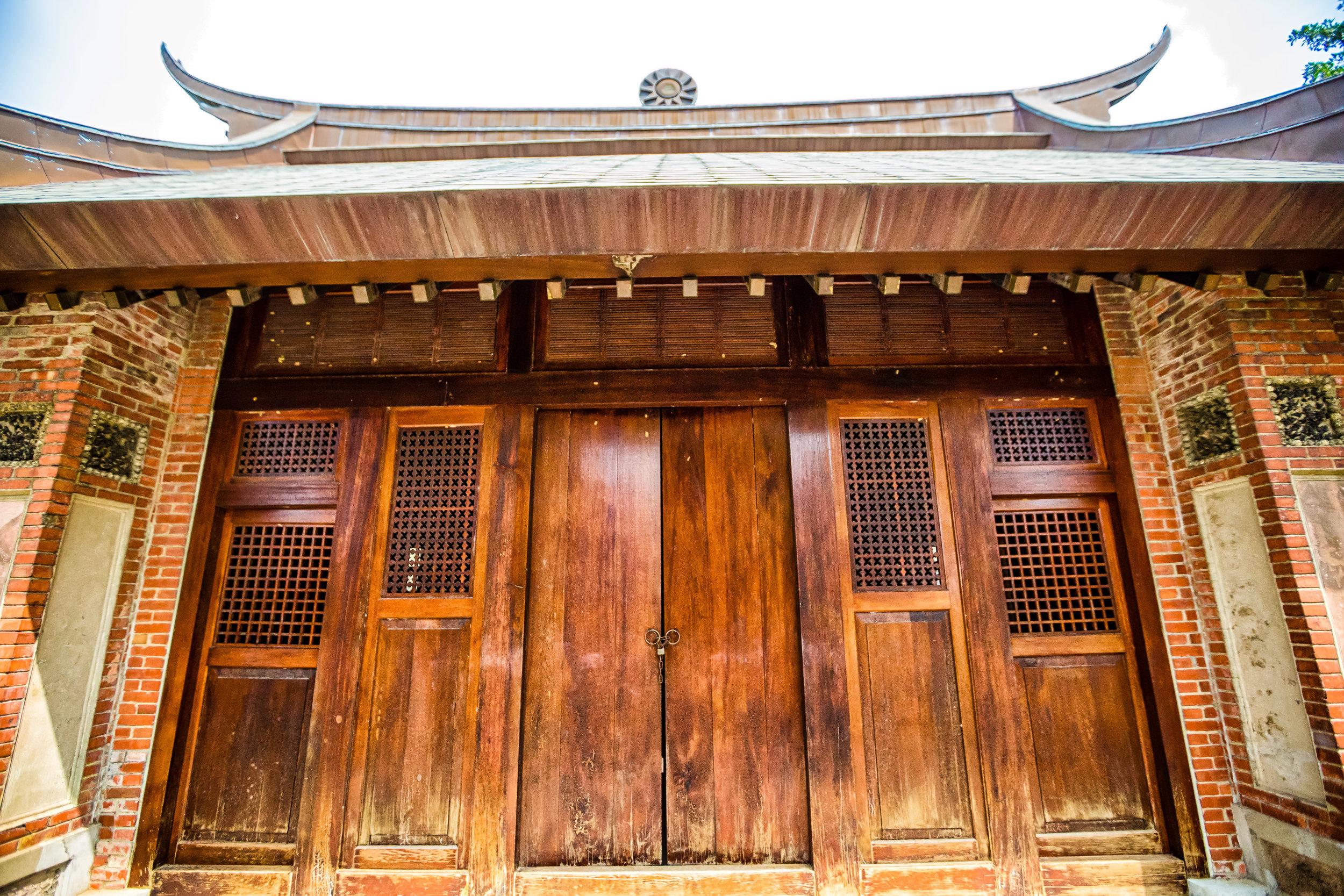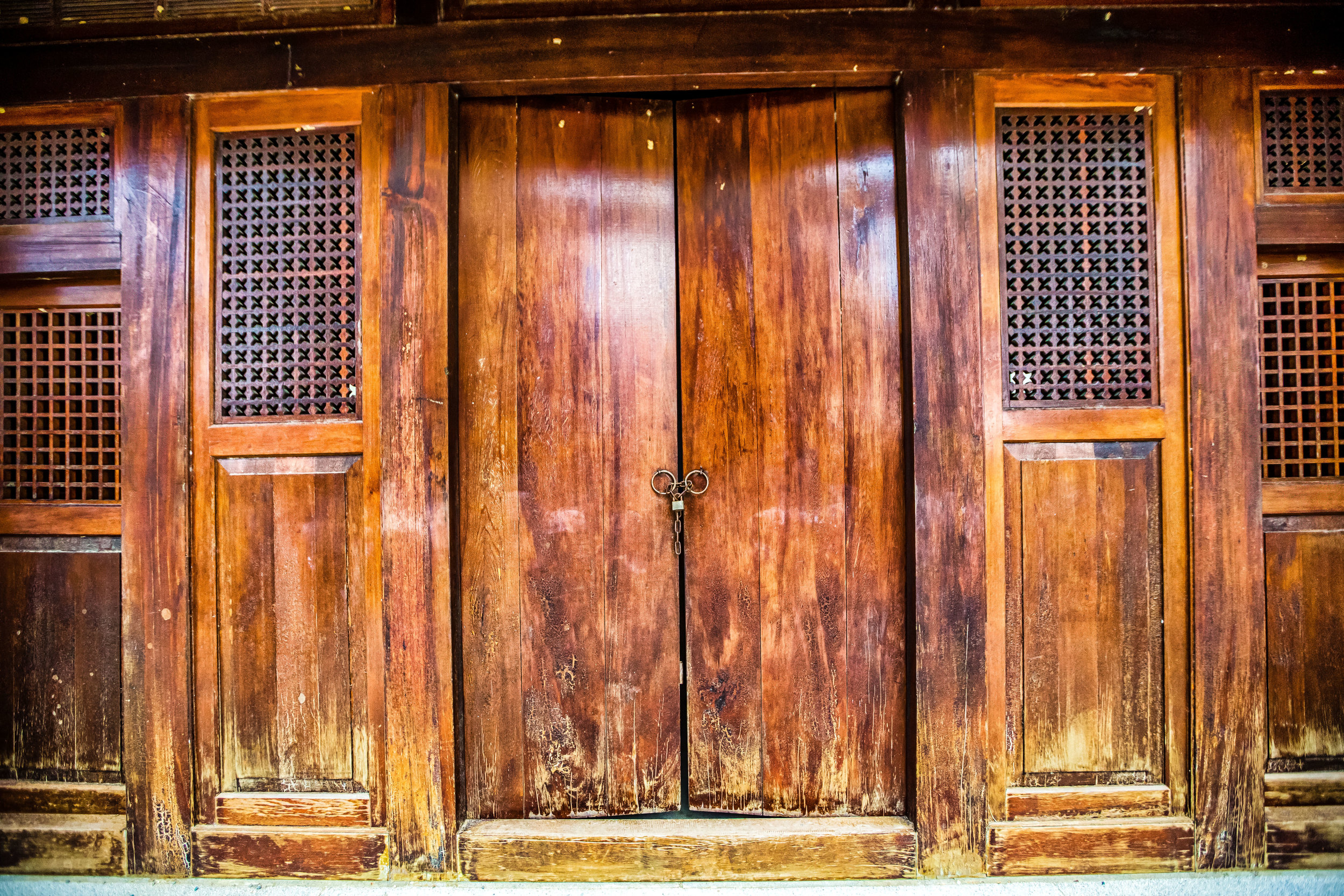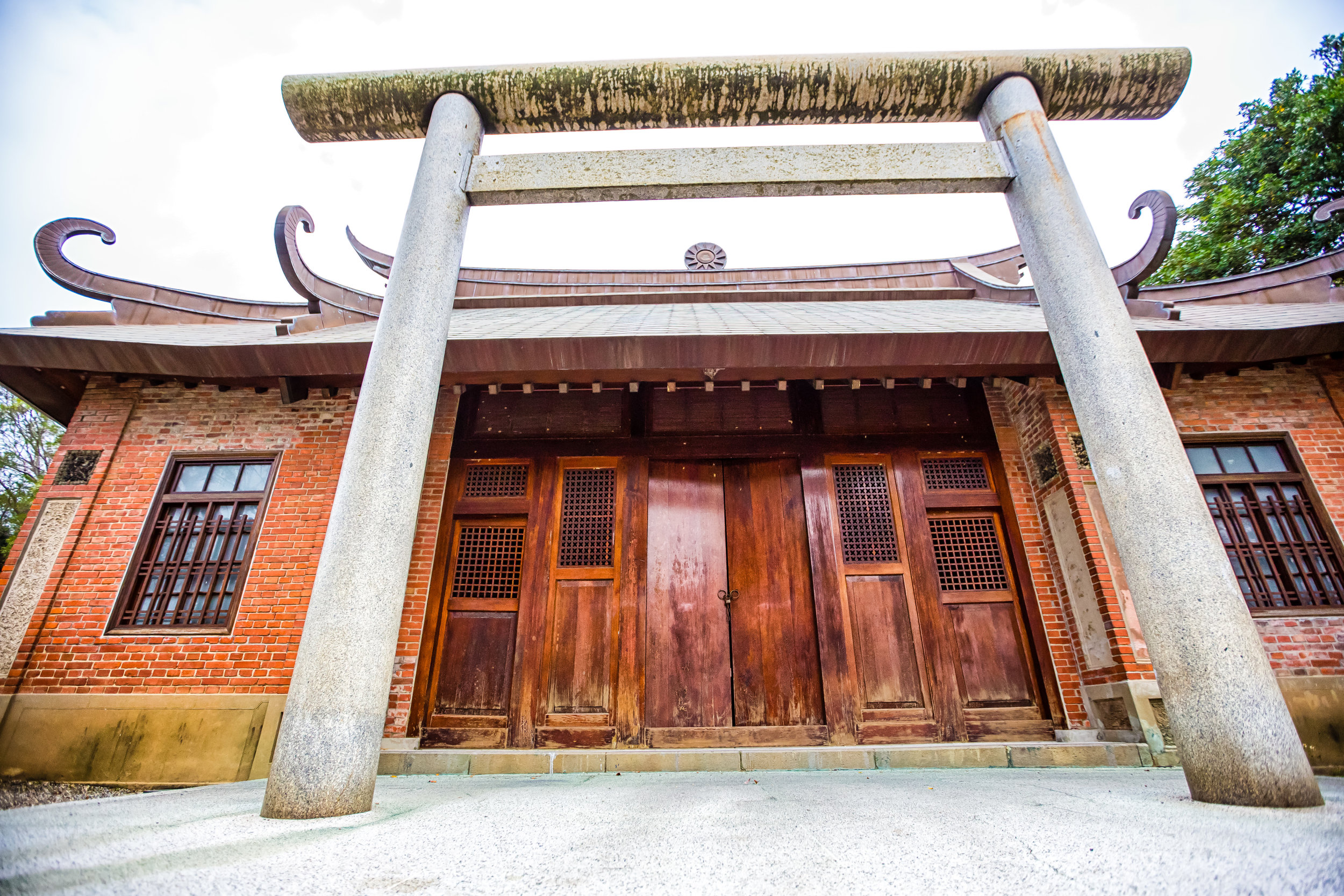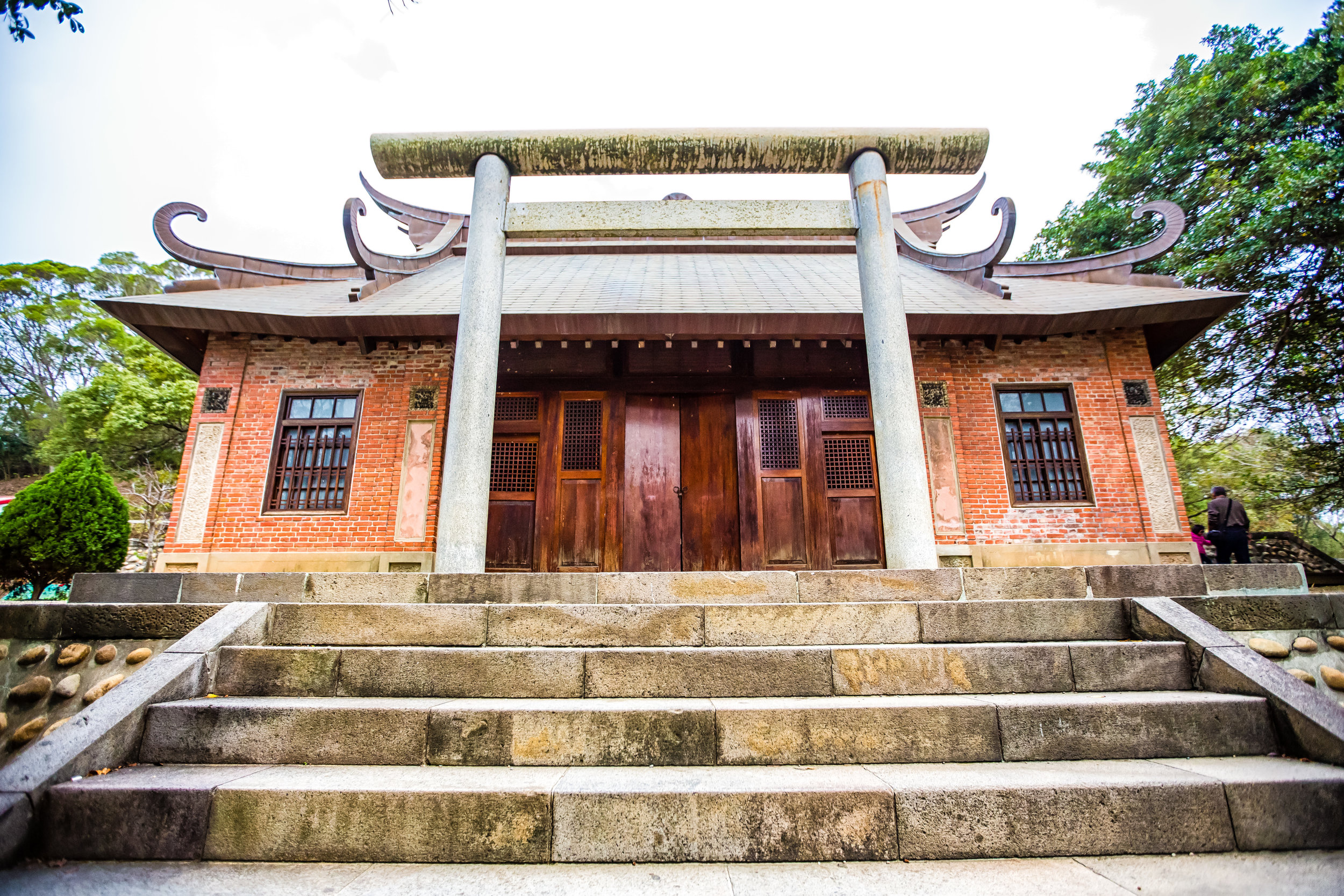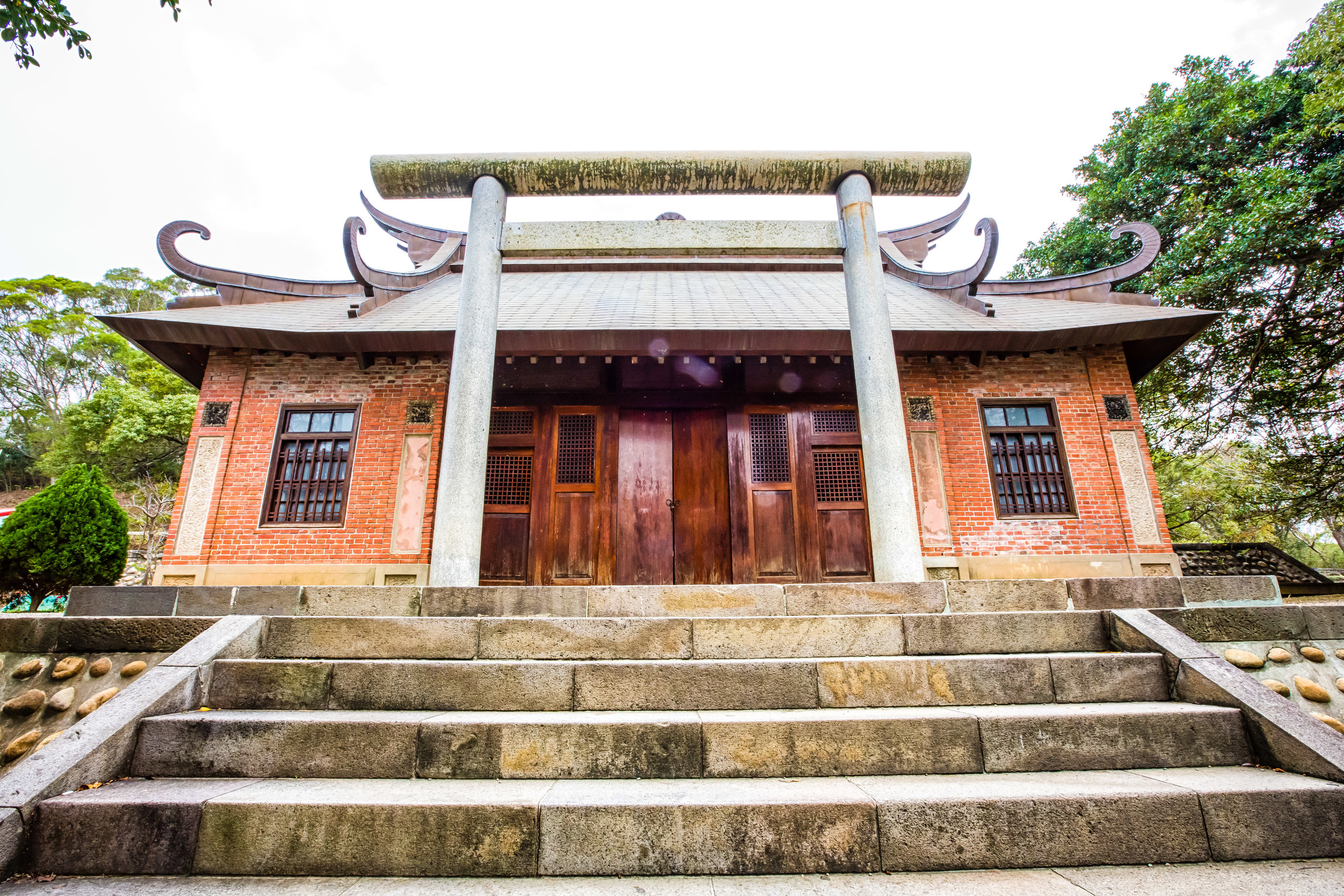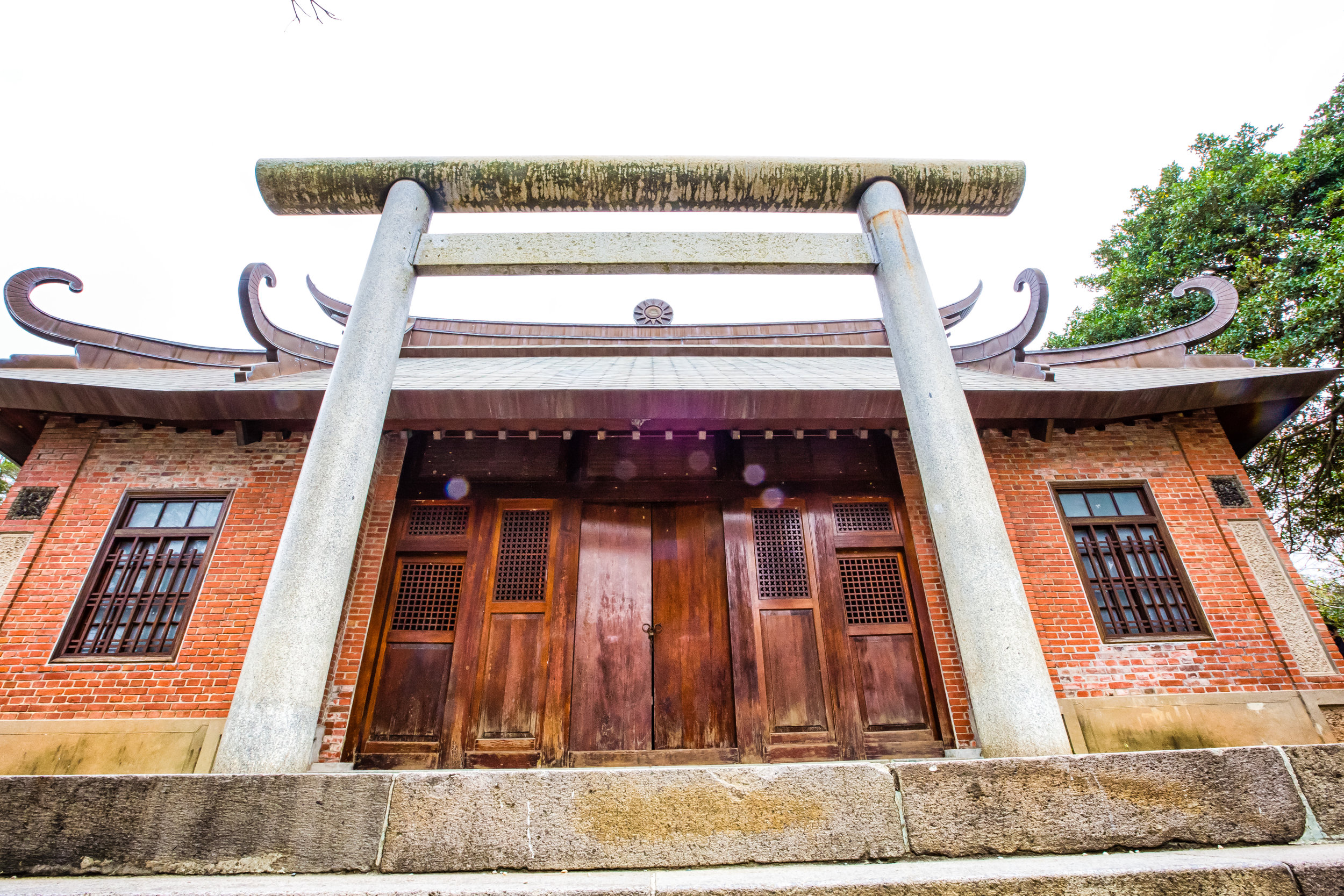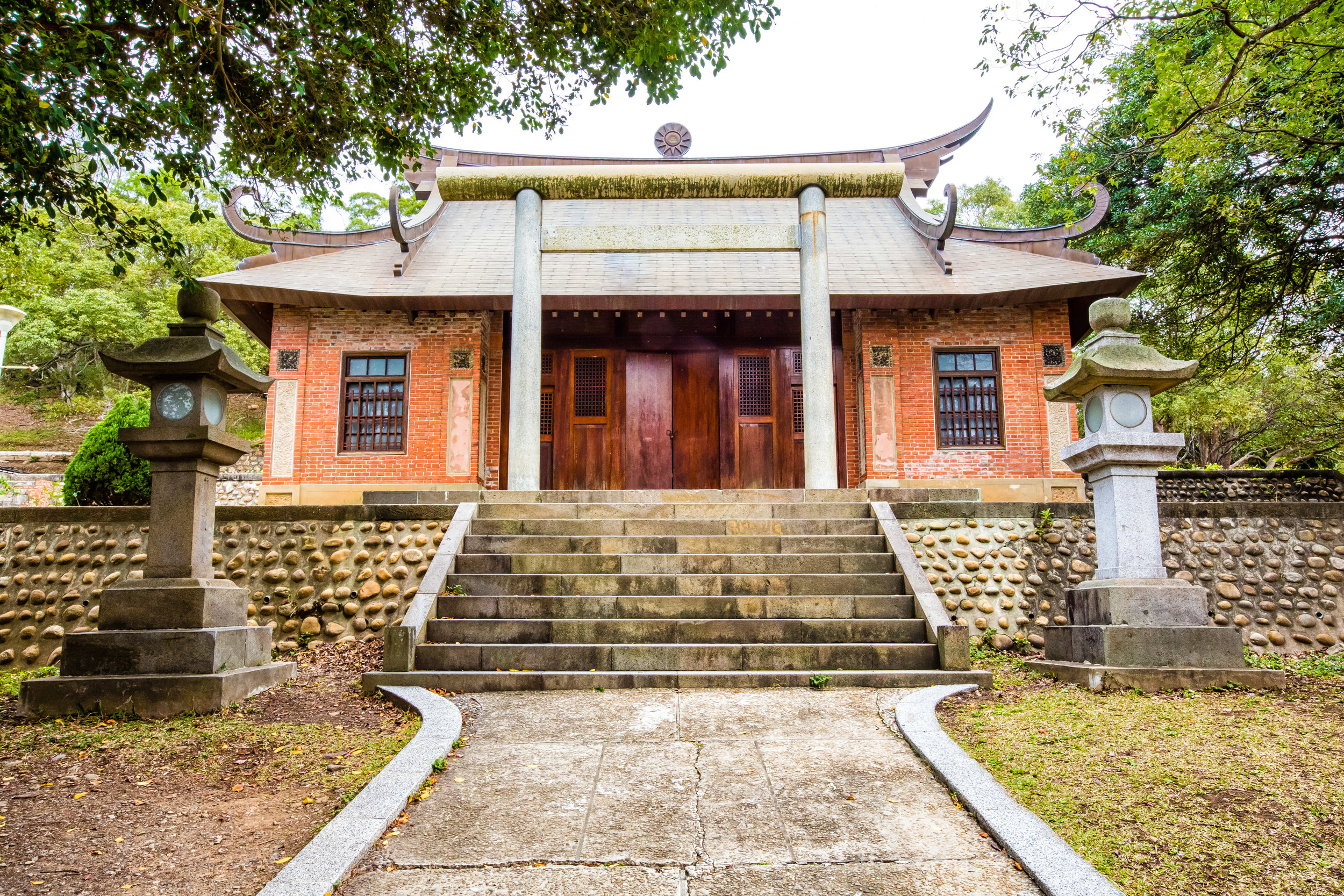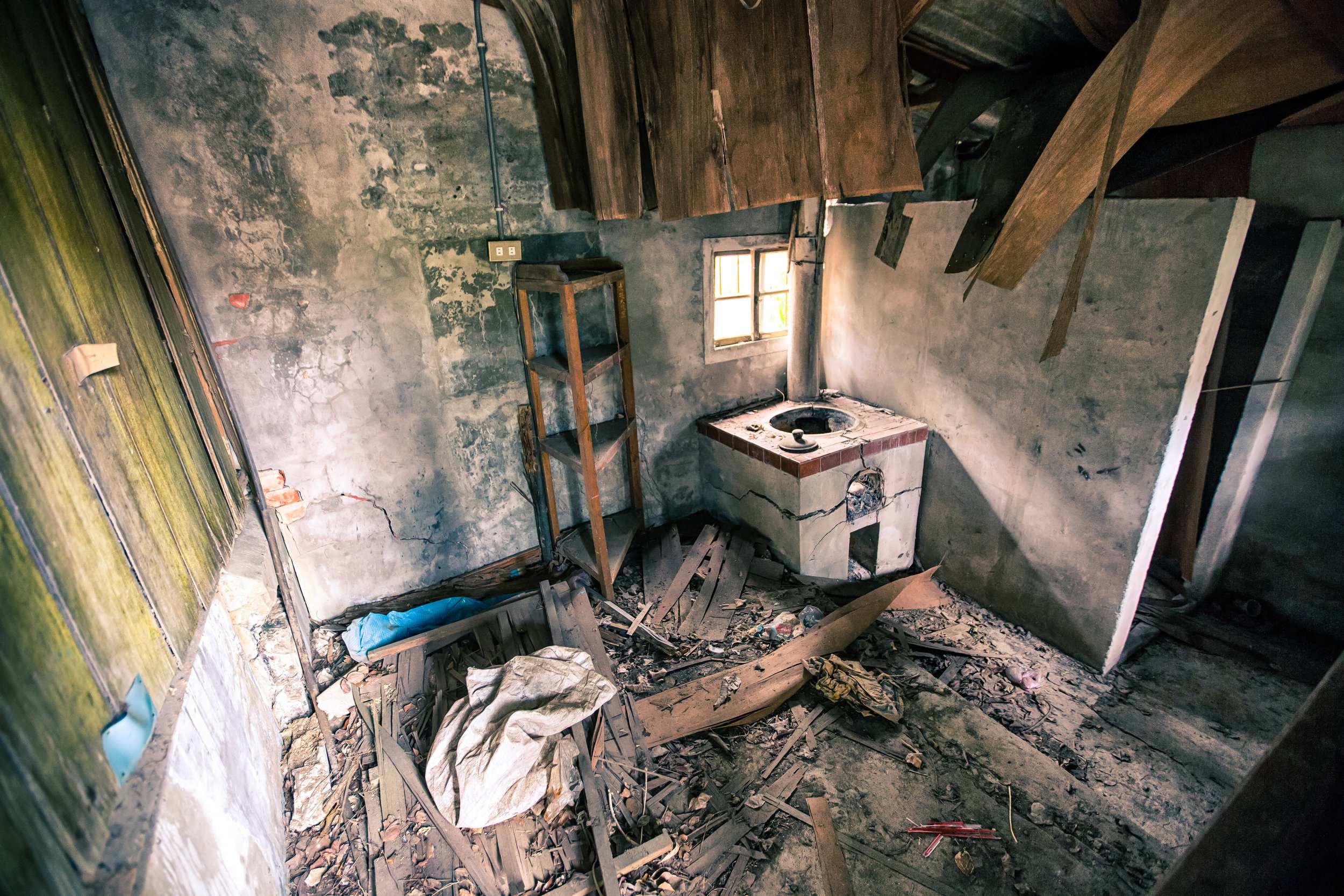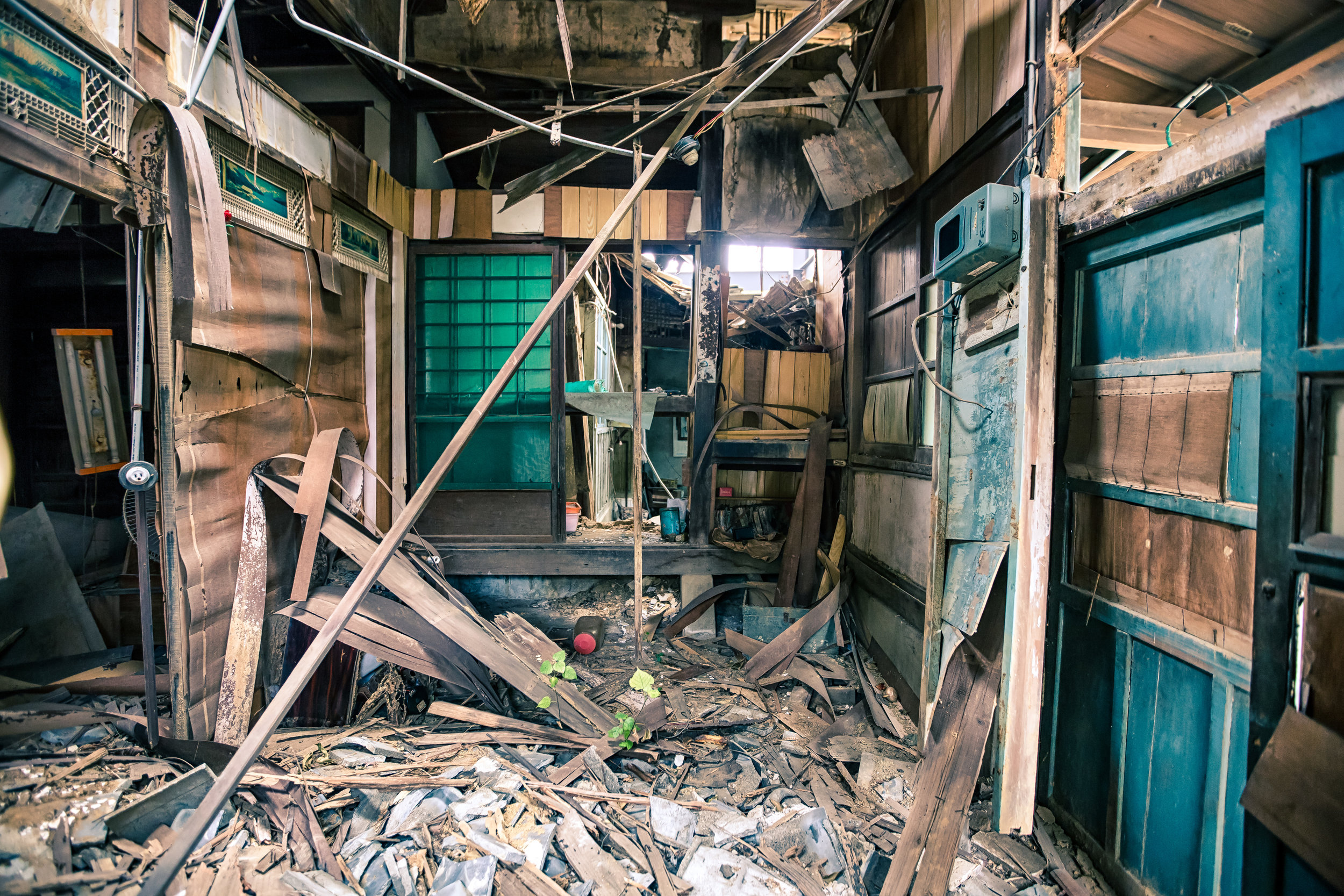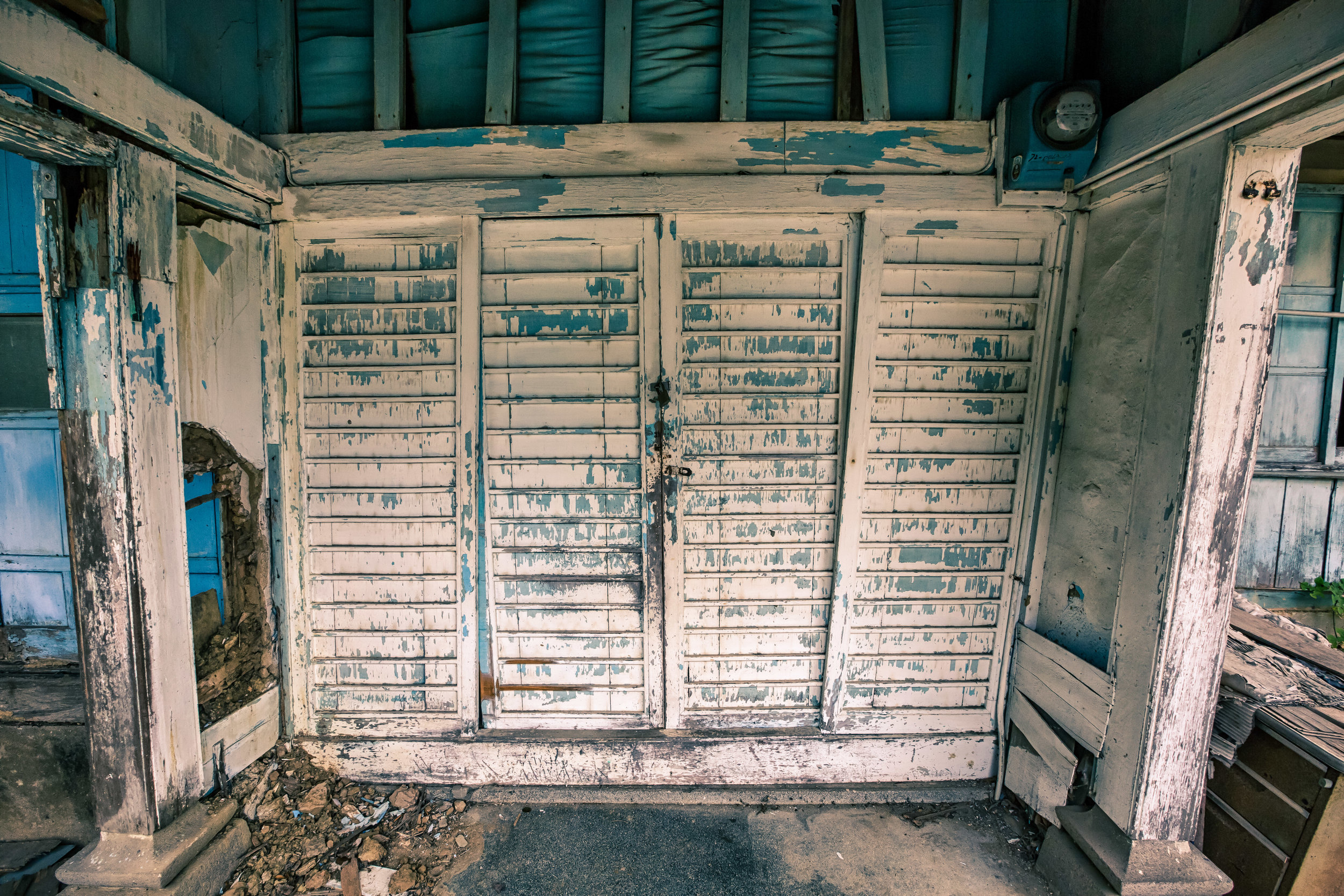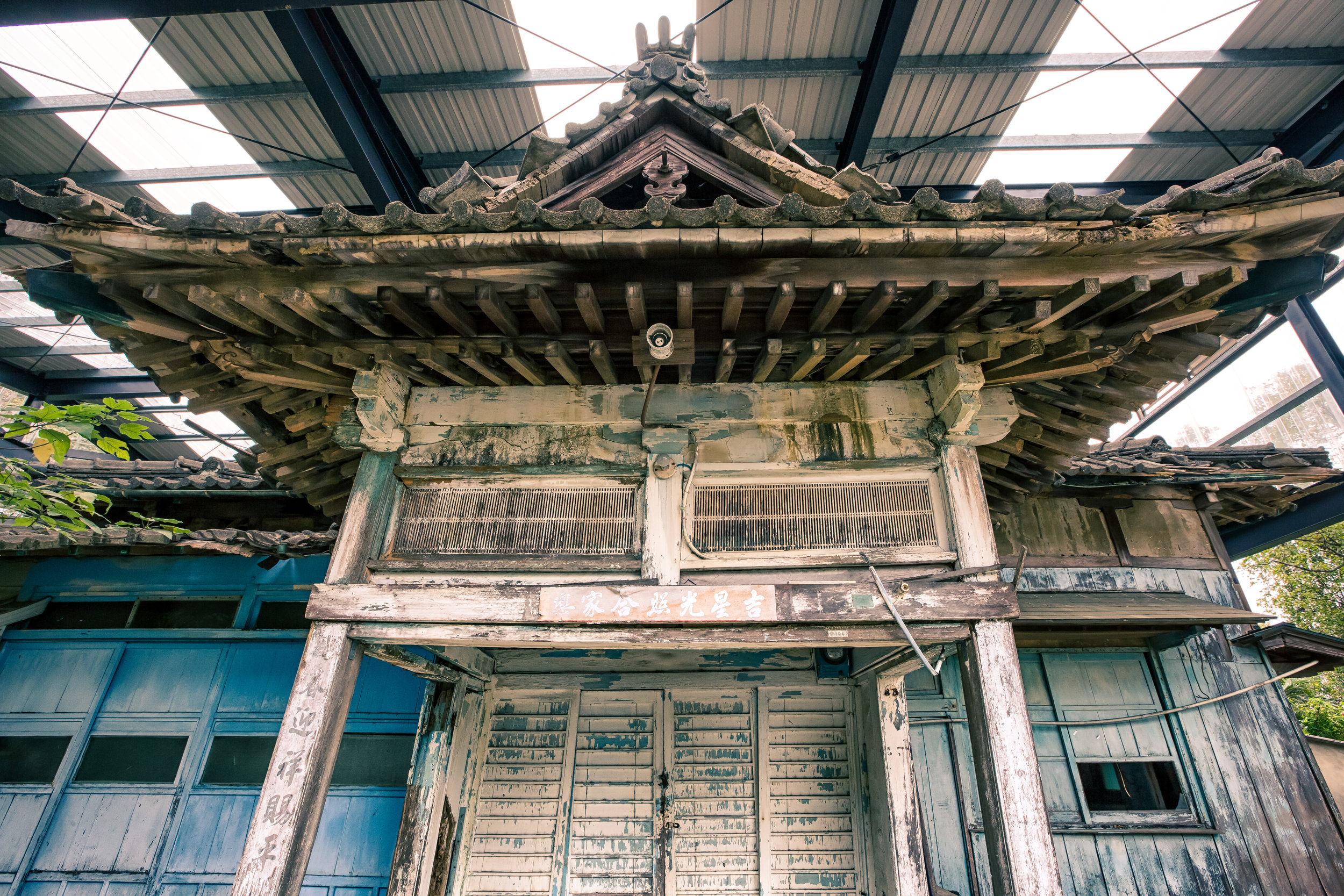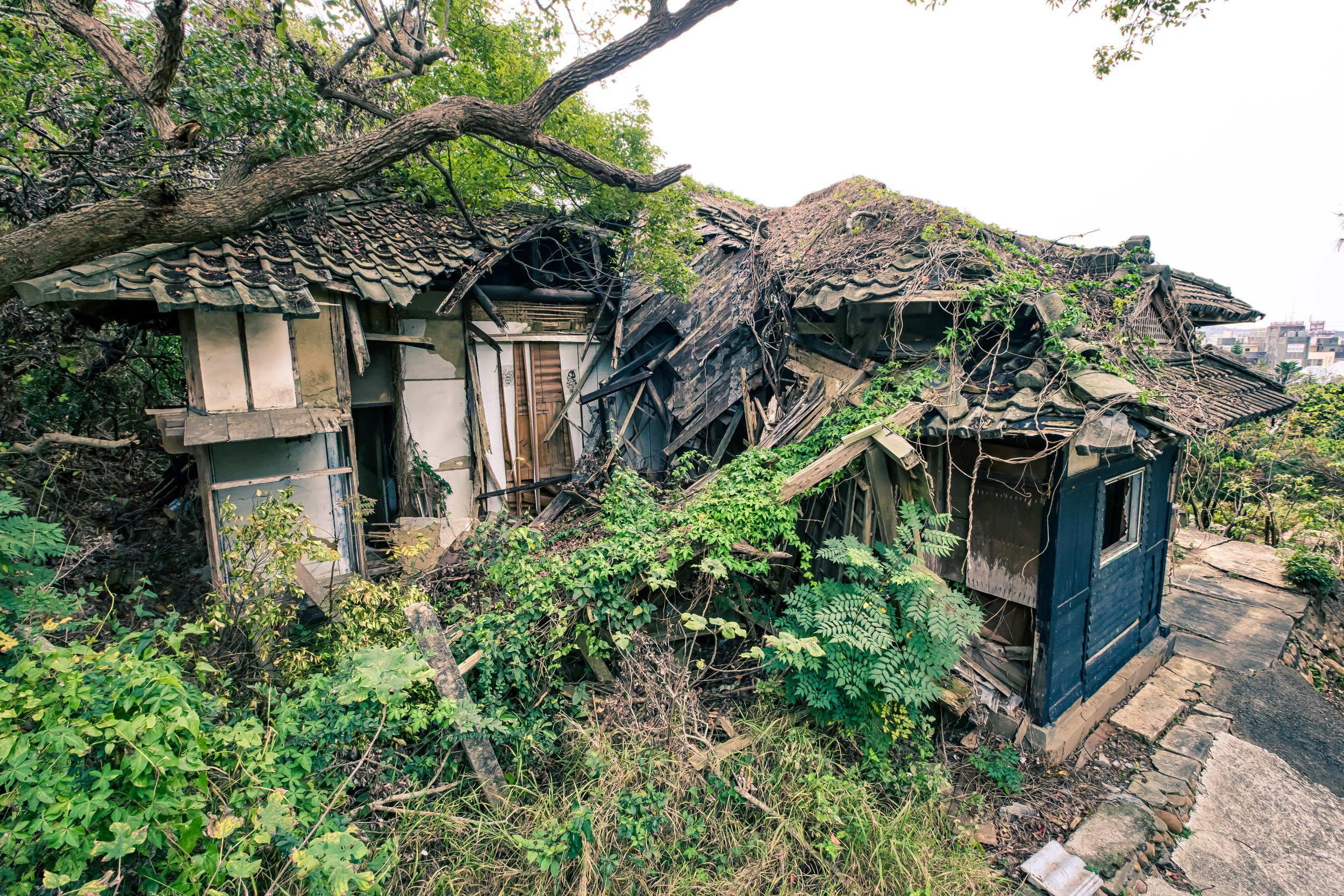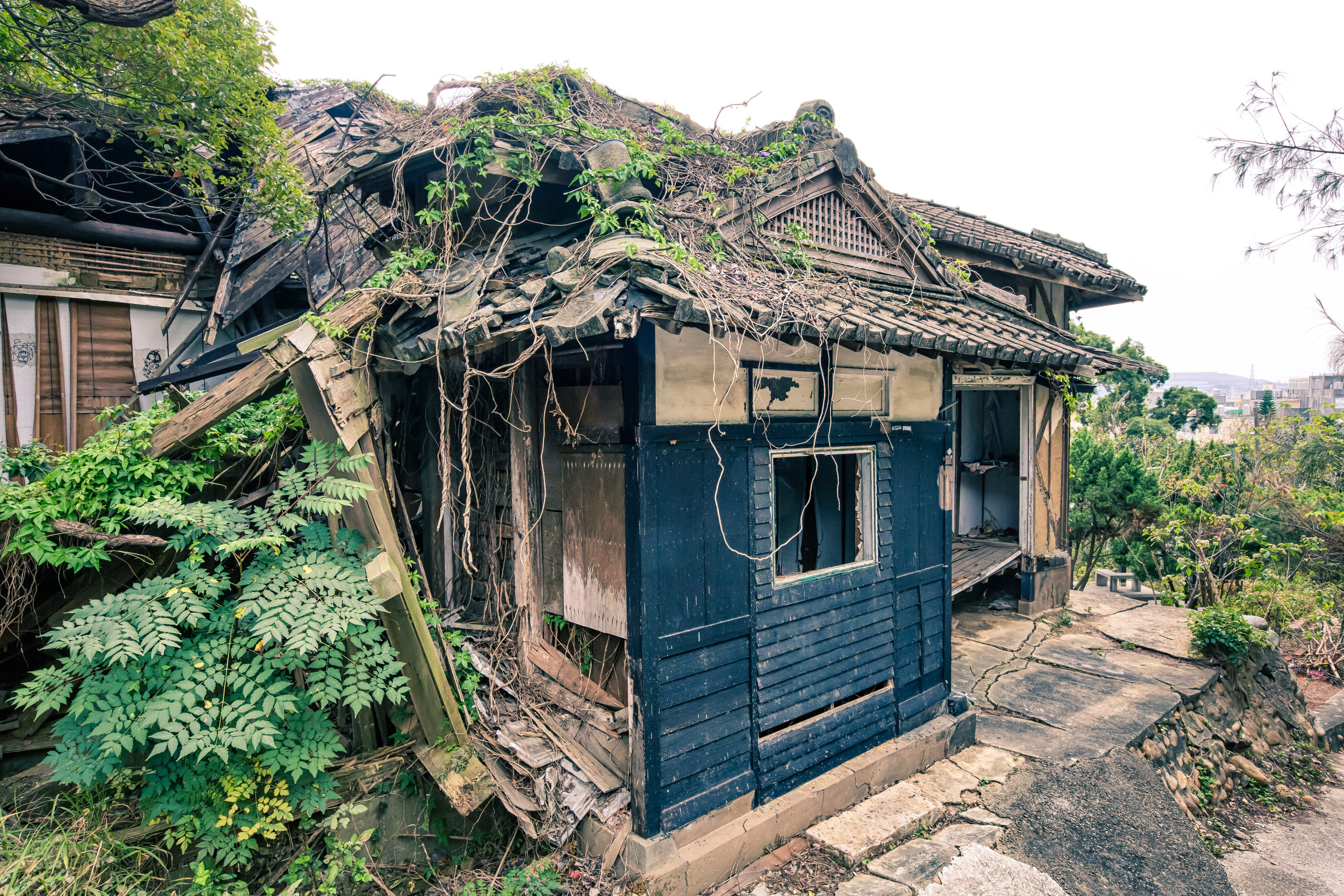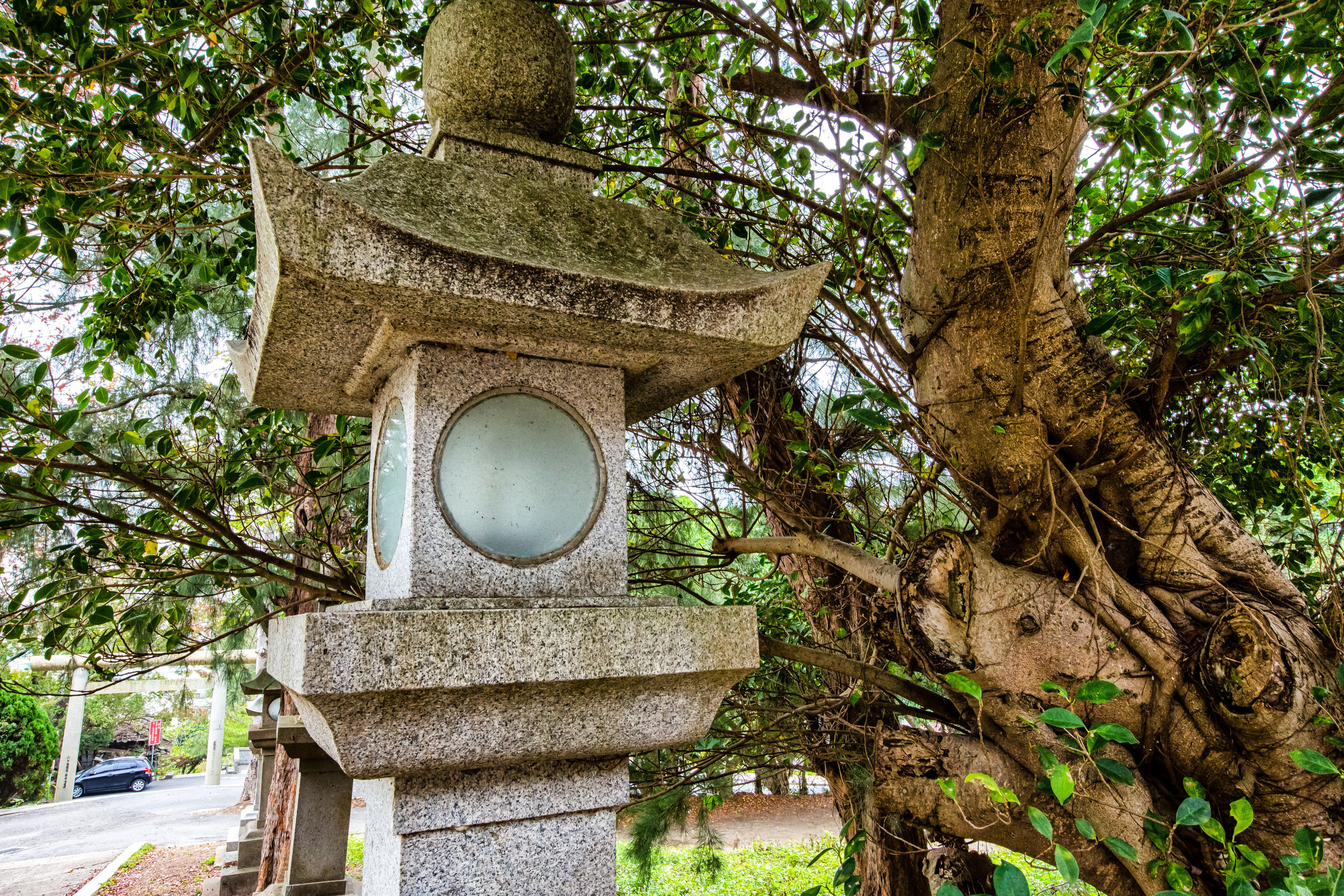A few months ago while doing research about the Taoyuan Shinto Shrine I learned about some of the other shrines that are still in existence in Taiwan today. The Taoyuan shrine had just recently finished a massive restoration project and opened to the public but my research pointed out that there were a few other shrines of historical importance around the country that were unfortunately in various states of disrepair despite their cultural and historical significance.
One of the shrines I learned about while doing my research was the Tungxiao Shinto Shrine which is situated in the small Hakka village of Tungxiao (通霄) on the western coast of Miaoli county. The small village which was originally named Thun-Siau (吞霄) in the Hakka language has a long history of development dating all the way back to the Kingdom of Tungning era (東寧王國) in the 1600s and experienced a period of urban redevelopment during the Japanese colonial era.
The shrine was originally named "Tsūseujinja" (つうせうじんじゃ) or the Tungxiao Shinto Shrine (通霄神社) and was one of the largest of its kind in the area with resident priests and various religious ceremonies held throughout the year.
Unfortunately the shrine opened just a few short years before the end of the colonial era which saw the end of Japanese political, cultural and religious influence in Taiwan and ultimately the destruction of the majority of the buildings of Japanese religious and cultural significance throughout the island.
Now 80 years old, the shrine has withstood the test of time, political turmoil and natural disasters and for the most part remains in great condition - As one of the few larger Shinto shrines remaining in Taiwan it has become somewhat of a popular tourist attraction for locals and was recently listed as one of the Top 100 religious sites to visit in Taiwan by the Ministry of the Interior.
The Japanese Colonial Era (日治時期)
A lot can be said about the crimes committed by the Japanese Empire leading up to the Second World War. The bitter memory of that era is still felt today throughout Asia and a day doesn't go by that Japan isn't reminded of the horrific atrocities that were committed during that period.
Taiwan's experience under Japanese colonial rule is considered to be a bit tamer than that of neighbouring countries as the regime sought to transform the island into a "model colony" and develop the islands infrastructure and economy as well as provide a modern education to the people living here.
As Taiwan was Japan's first colony, the Japanese Empire wanted to show the world that being under Japanese control wasn't such a terrible thing and that the people of Taiwan would only benefit from becoming a part of the empire. Unfortunately history has shown that things didn't exactly turn out that way for some of Japan's other colonies.
The colonial period (1895-1945) which lasted for a half century had its fair share of resistance from the local people and the colonial power was guilty of a great many atrocities, however the general feeling today is that people of this country share a strong bond with the Japanese and enjoy a friendship that despite a troubled history is based off of mutual understanding and respect for each other.
When Japan ultimately surrendered to the allies at the end of the war, control of Taiwan was ambiguously handed over to Chiang Kai-Shek (蔣中正) and the Republic of China.
The Sino-Japanese War caused a lot of resentment for the Japanese among the Chinese population and leaders of the ROC government in China had a hard time understanding why the people of Taiwan looked upon their period of Japanese control with so little disdain.
In truth, in the short time that the Japanese controlled Taiwan, they instituted reforms in education and helped to develop the island's infrastructure leaving the incoming regime with a much better situation than they ever could have imagined when they were forced to retreat to Taiwan at the end of the Chinese Civil War.
Under Japanese rule, Taiwanese were granted (nominal) permission to participate in Japan's democratic government which helped to foster the people's early appreciation for democracy. The modernization reforms undertaken by the colonial government in improving the education and infrastructure on the island were a stark contrast to the corrupt, totalitarian approach that the Chinese Nationalist Party implemented upon their arrival which resulted in a thirty-eight year period of Martial Law known locally as the "White Terror Period" (白色恐怖) where tens of thousands of people were jailed, went missing or murdered.
After Japan's surrender, the new regime in Taiwan quickly implemented harsh language laws that would punish people who spoke Japanese, Taiwanese, Hakka or any of the Indigenous languages as well as sparing no effort tearing down any sign of Japanese cultural influence throughout the country.
Tongxiao Shinto Shrine History
In 1937 (昭和12年) during the later stages of the colonial era, the colonial government instituted its "Kōminka" policy (皇民化運動) which aimed to (forcibly) convert the entire population into Japanese citizens and loyal subjects of the emperor. Part of that policy was to build places of Japanese worship while converting or destroying Chinese temples and is looked upon historically as the worst part of the Colonial Era as the Japanese empire was entrenched in the war which saw it attempting to expand its empire all over Asia.
The Tungxiao Shinto Shrine was built that very same year when the "Japanization" policies started to take root around the island. The shrine was meant to help unite the people and inspire a certain level of Japanese patriotism or "Japanese spirit" known as "Yamato-damashii" (大和魂) which would then in turn help to recruit willing soldiers to aid in the war effort.
Like the shrine in Taoyuan, the Tungxiao Shrine became one of the few places of worship built by the Japanese that was able to escape destruction. In 1947, a short decade after it first opened, the shrine was refurbished and converted into the "Tongxiao Martyr's Shrine" (通霄鎮忠烈祠) which would serve the purpose of honouring the fallen soldiers of the Republic of China Armed Forces as well as honouring the Pirate-King Koxinga (鄭成功) who was an important figure in Taiwanese history.
The shrine sat quietly on the hill behind Tongxiao Junior High School (通宵國中) until 1999 when the main building as well as the administrative building were damaged extensively by the infamous 921 Earthquake (九二一大地震).
The local government put together a plan to restore the main building with construction beginning in 2004 and ending the next year. Plans to restore the other two buildings however met with resistance as (despite being extremely damaged) the residents who lived in them were reluctant to move.
Design
In my previous post about the Taoyuan Shinto Shrine I spoke about how the shrine was one of the most complete examples of the architecture of the Showa period (昭和) and was in better condition that some of the handful of others that are left standing in Taiwan today.
Design-wise the grounds of the two shrines are relatively similar but with the Taoyuan shrine you get a much more 'complete' version while the Tungxiao shrine is somewhat of a work-in-progress in terms of its current condition and the level of access visitors are given.
While the Taoyuan Shrine was being restored, the Taoyuan City government completely shut down the grounds and didn't allow people to visit. In Tongxiao the situation is a bit different - The Hall of Worship (拜殿) is in great condition and visitors are allowed to check it out but are not allowed entry as the main doors are closed and everything inside has been removed.
The other parts of the temple which include an Administration building (社務所) and a rest home (休憩所) which would have housed the people living at the shrine are in ruins. The actual main shrine itself (which is behind the main building) was destroyed by the KMT and all that remains are the stairs that lead up to it and a patch of cement that acts as evidence that there was once something there.
There are plans to restore both the administration building and the house next to it but that work has been on 'siesta' for a while due to 'lack of funds' at the local government level. As of now there is a covering over the beautiful administration building to protect it from the elements. The other home is completely open and you're actually able to walk inside if you like. The building isn't in very good shape though so I wouldn't really recommend it as you may damage it further.
While the design of the temple grounds is similar to the shrine in Taoyuan, the Tongxiao Shrine's main claim to fame is that it is the ONLY Shinto Shrine in the world with a Southern Fujian-style Swallow-Tail ridged roof (閩南式的燕翹脊屋頂) likely a cultural tip of the hat to the Hokkien people which had settled in Taiwan a few centuries earlier and whom were at that point citizens of the Japanese empire.
To explain the shrine a little better, I'm going to separate the different parts that are still in existence and give a bit of a description of them as well as the shape they're currently in:
The Administrative Building (社務所)
The Administrative Building at the Tungxiao Shrine is much larger than the one at the Taoyuan Shrine but it is unfortunately in a terrible state of disrepair and looks like it is in urgent need of restoration in order to save it from the elements. As I mentioned above the local government is cash strapped, so its not likely that work will be completed on the building any time soon. The government has taken the initiative however to cover the building with a protective roof and hopefully that will solve the problem until the time comes when the restoration project restarts.
The Administrative Building would have been one of the most beautiful parts of the entire temple complex. As mentioned above, its a much larger building than the one at the Taoyuan shrine and would have had several rooms. Despite the interior being inaccessible I was able to get some shots of the roof which happens to be one of the most intricate I've seen of any of the remaining Japanese era buildings.
The Rest House (休憩所)
The rest house looks like a typical Japanese home and was part of the temple complex where the people who lived at the temple likely lived. Today the rest house is in ruins and even though it is accessible to the public, its probably not a great idea to have a bunch of people walking around it as it could be dangerous and might also ruin parts of the original structure.
The small house is situated on the side of the mountain and in the days before Tungxiao Village was developed there was probably a really great view of the village and the ocean from the windows of the home. I'd imagine it would have been quite a peaceful place to live.
The rest house was occupied by what were probably squatters after the KMT arrived in Taiwan and modifications were ultimately made to it. The housing situation was quite terrible when the KMT retreated to Taiwan at the end of the Chinese Civil War so it was common for places like this to become the new home for those non-military personnel needing a place to live.
The Main Shrine (主殿基座)
Unfortunately the Main Shrine no longer exists - It was likely destroyed when the KMT converted the shrine into the Martyrs Shrine sometime in the late 1940s although there isn't much information available about when it was torn town. Today there is only a small patch of concrete at the top of a flight of stairs that remains as evidence that the Main Shrine ever existed.
As with most Shinto shrines, the main hall of the shrine was once a place that was off-limits to worshippers and was used solely by the priests who resided at the shrine. The Main Hall, which could also be referred to as the "Deity Hall" typically sits somewhere behind the Hall of Worship and can be connected by either a back door or a path that leads up to it. In most cases the Main Hall is quite small and looks a bit like a Chinese-style palanquin that you might have seen on the streets of Taiwan during a temple parade.
Back in the day, the Tungxiao shrine was dedicated primarily to the Goddess Amaterasu-ōmikami (天照大神) with another shrine for Prince Kitashirakawa Yoshihisa (能久親王) - a popular figure in Taiwan at the time. You would have found their shrines located within the now non-existent Main Shrine.
I'm not entirely sure if a rebuild of the original Main Shrine has been planned to go along with the restoration of the other two buildings but I would hope that it would eventually be reconstructed to offer a much more complete experience for people who visit the temple.
Thus far all that remains is the stairway that led to the shrine and a cement block that would have been the base.
Hall of Worship (拜殿)
The Hall of Worship which can be considered the main part of the shrine and the most important attraction is a special one - As I mentioned above it is the only Shinto Shrine in the world that has a roof of its kind and even though it had to be restored after the devastating 921 earthquake, the original design is still intact.
The building is a single-room hall and was the place where people would go to pray and meet with the priests. When the KMT converted it into a Martyrs Shrine they removed all of the Japanese religious elements and replaced them with spirit plates to represent the deceased members of the Republic of China Armed Forces as well as adding a shrine to Koxinga.
Even though the building has reverted back to a "Shinto shrine" (for tourist purposes) and everything inside was removed, one of the features that was added after it was converted to the Martyrs Shrine still remains today - The star of the Republic of China sits on top of the roof which in my humble opinion takes away somewhat from the shrine's authenticity.
The roof is the most significant design aspect of the Main Hall and even though it has since been restored I think its important to notice some of its design characteristics. The reason why the roof stands out (as mentioned above) is that it was designed with Southern-Fujian Architecture (閩南式) in mind differing from that of most other Japanese buildings of the Showa period which were distinctly influenced by the design of the Tang Dynasty (唐朝).
The majority of the remaining Japanese Colonial Era buildings, including the Taoyuan Shinto Shrine and the various Butokuden's (武德殿) that I've posted about follow the Tang-dynasty architectural style with a "hip and gable" (歇山頂) roof design. The Tungxiao Shrine however took a different path in its design by using a Swallow-tail ridged roof (燕翹脊屋頂) making it different from every other Shinto shrine in the world and securing it a special place in history.
Visiting Path (參道)
The Sandō (參道) or "Visiting Path" is a common feature for Japanese Shinto and Buddhist temples that lead up to the Main Hall. In the case of the Tungxiao Shinto Shrine the path is quite beautiful and is in excellent condition. The first thing you're met with is a Torii gate (鳥居) which is meant to signify the beginning of the shrines territory. The path beyond the gate leads you up to the Main Hall and is lined symmetrically with traditional Japanese stone lanterns (燈籠) and is tree covered with maple trees on the right and fur trees to the left.
What's Missing?
While what you see today is pretty much what you would have seen in 1937 there is something important that is notably missing and is something that is found at all Shinto shrines in Japan - The Purification Fountain (手水舍) which would have been somewhere near the main gate to the temple is an important aspect of Shintoism revolving around the notion of the "sacred-profane dichotomy".
At Shinto temples, the Torii gate at the entrance acts as the a separation between the world of the 'profane' from that of the 'sacred'. When you walk through the gate you are leaving the world of the profane which means that you should do so in the cleanest possible manner. So in order to ready yourself for entrance into the sacred realm you would have to do so with a purified body and mind. The purpose of the fountain was for visitors to the shrine to first wash their hands, faces and mouths before they went in.
Another missing aspect and something that I haven't seen mentioned while doing research are the Bronze Horses that were common at most temples like this. The bronze horses have a double purpose with the first being that they symbolize the effort monks at the temple would have to display in their daily lives and the second being that they are all stamped with the chrysanthemum seal which acted as a seal of approval from the Japanese royal family. In a lot of cases the Bronze Horses that you'd see at temples like this were destroyed due to their symbolic relationship with the Japanese royal family.
Map Location
Despite restoration work on the shrine and the former administrative buildings being incomplete you are able to visit the shrine and enjoy the beautiful scenery around it. Unlike the Taoyuan Shrine which was closed for a long period of time you are still able to visit and check this one out. Unfortunately the Miaoli government has had to stop restoration work due to mismanagement of funds at the local government level but I hope that once they get that problem sorted out that work on the shrine starts back up again so that this beautiful shrine can be brought back to its former glory.
If you're in the Tungxiao area be sure to check this one out - There are so so few shrines like this still in existence today and this is one of the better examples of the architecture of the Showa period mixing together with local design. The shrine is just a short walk from the Tungxiao train station so it is an easy one to visit!
Gallery / Flickr (High Res Photos)
